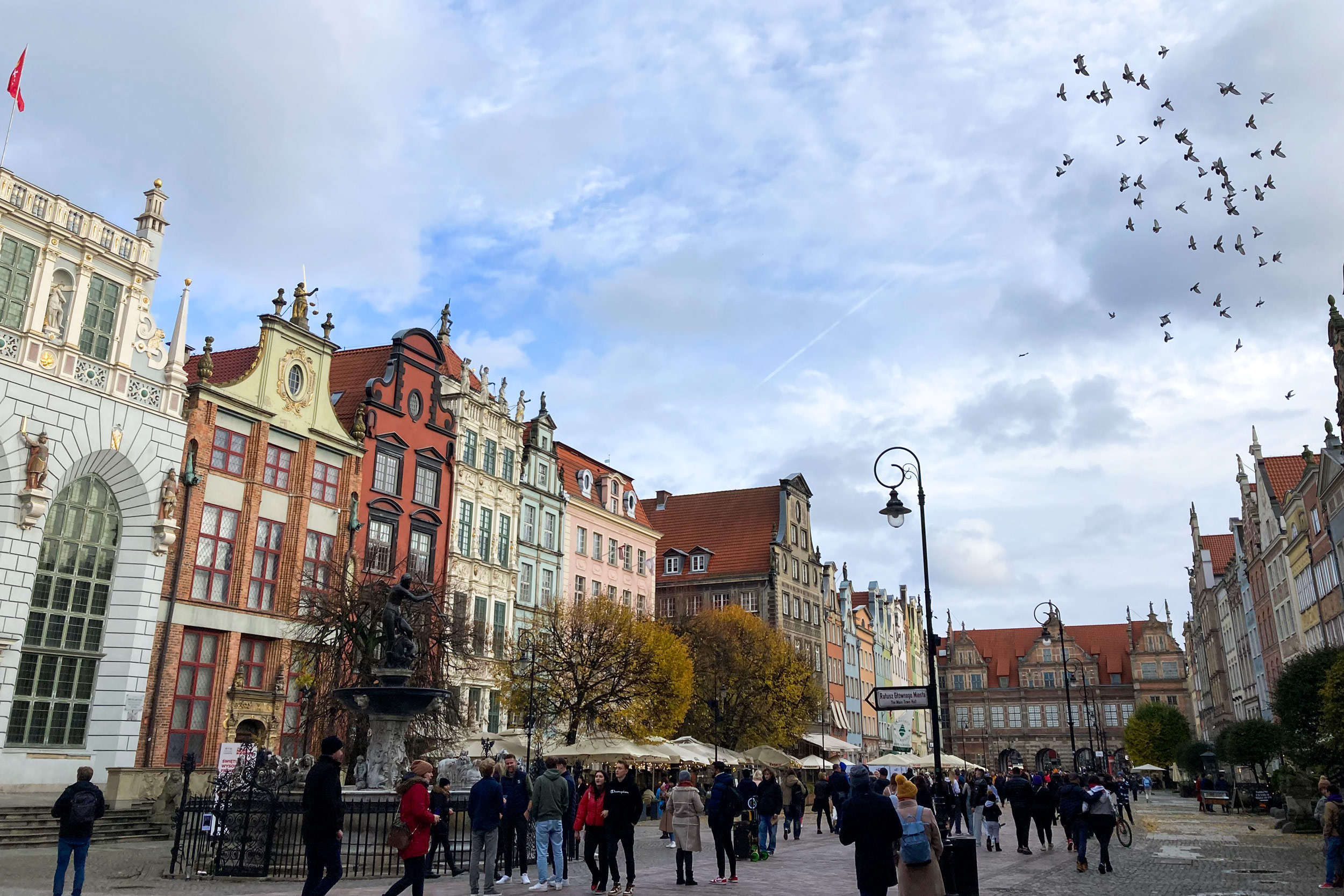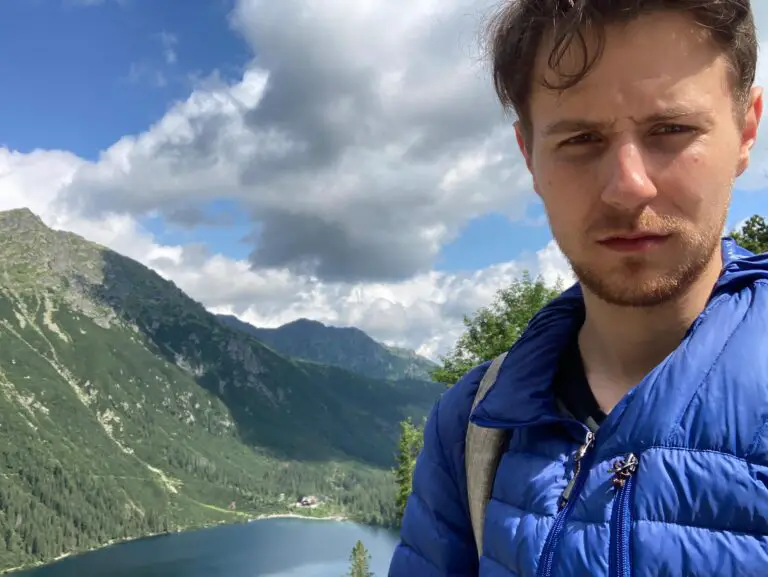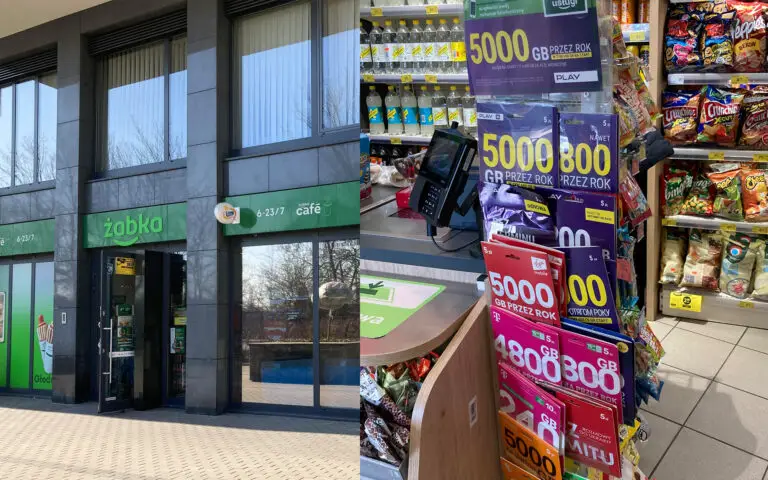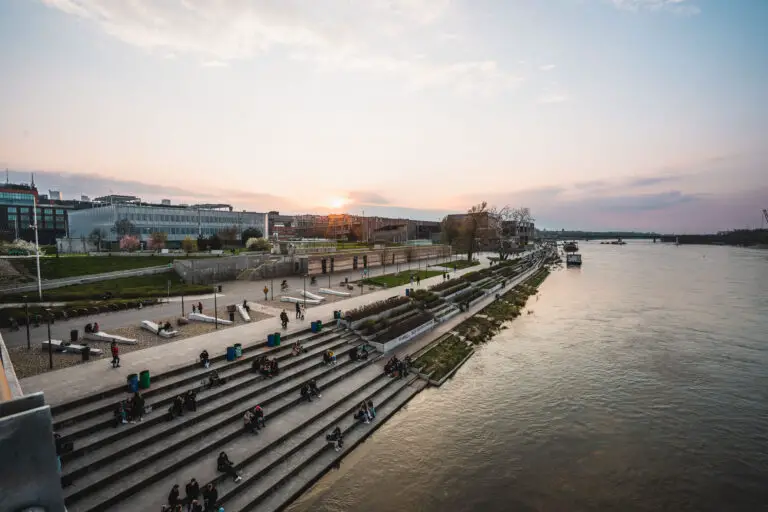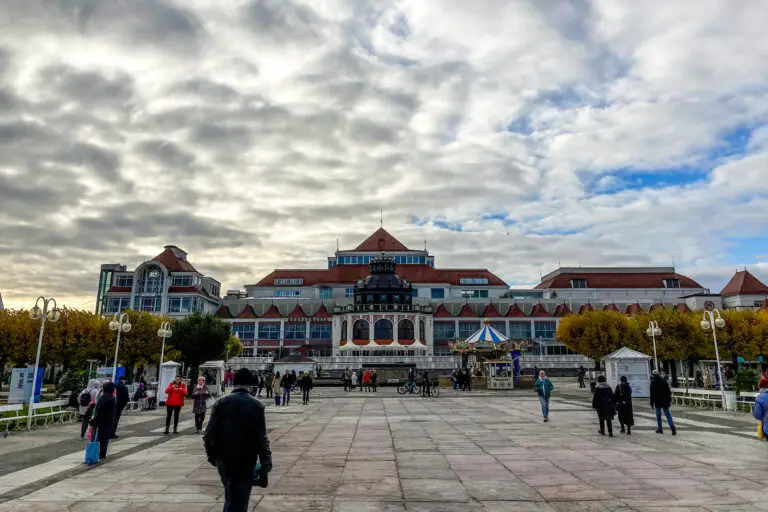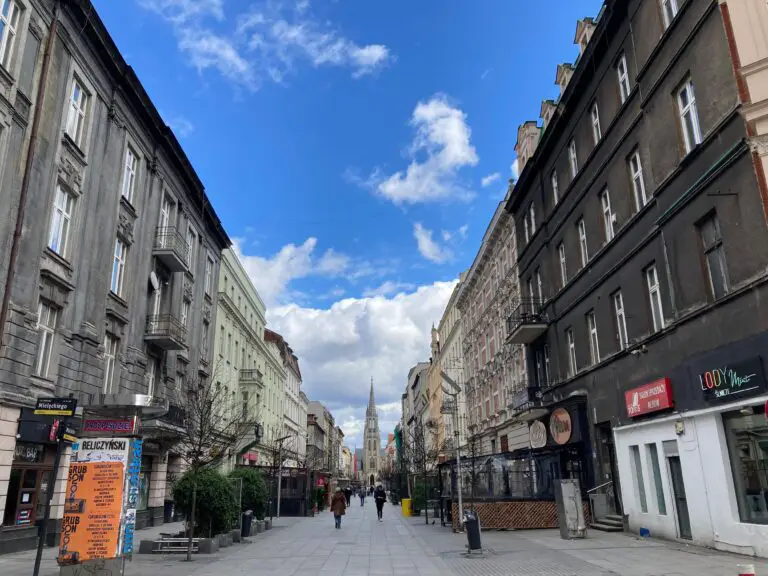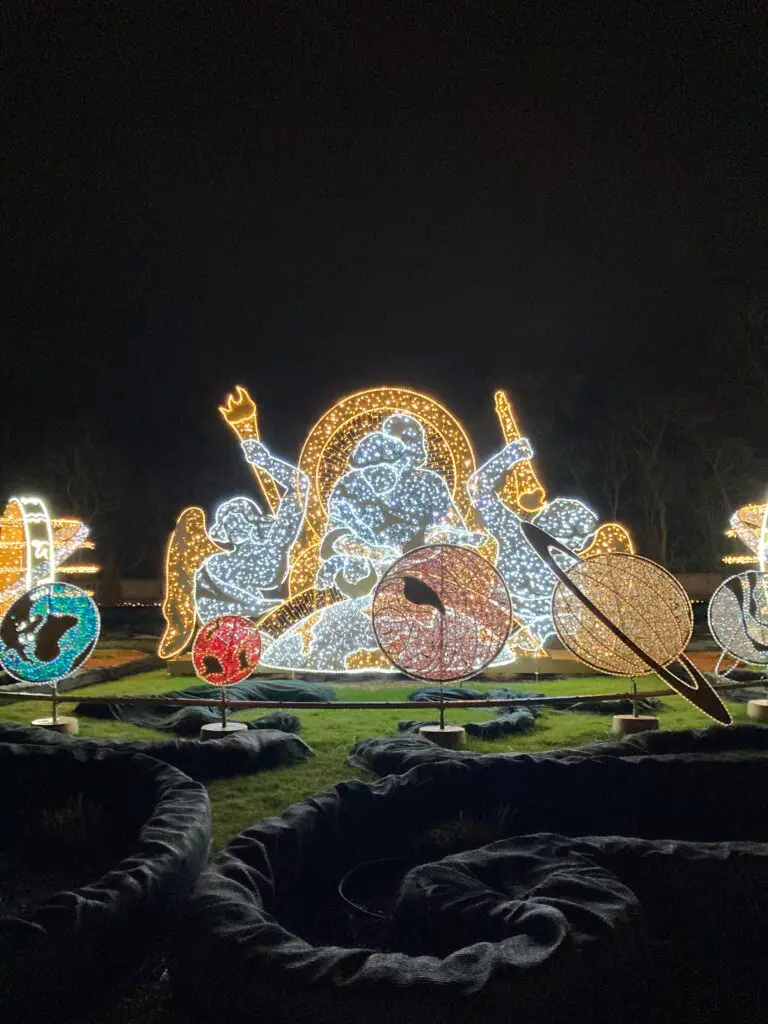20 Best Things to Do in Gdańsk: Our Ultimate Guide
Gdańsk is a city of less than half a million people, and yet it packs a powerful architectural and historical punch. Thus, the best things to do in Gdańsk are also amongst the best to do in Poland, and visiting Gdańsk should be high on your list of cities in Poland to visit. From UNESCO World Heritage Sites to important historical sites important to all of Europe, to unique chances to experience culture, Gdańsk has it all. Additionally, there is stellar nature to enjoy in Gdańsk, including the beaches of the Baltic Sea, with some of the best beaches in Poland near to Gdańsk.
With so much to offer, it is easy to see why Gdańsk is so popular amongst Poles and foreign tourists alike, with over 2 million tourists in Gdańsk in 2022, with around 25% of those being from abroad. However, these numbers are much lower than other popular places in Europe, and if you visit in the off season, you will feel like you have the city to yourself! All in all, Gdańsk is one of my favorite cities in Poland, and I think it will become yours if you choose to visit.
Best Things to do in Gdańsk: City Icons
These attractions are the best of the best Gdańsk has to offer. All are centered in the historic Gdańsk Old Town, the first entry on the list, and the place where you will likely spend most of your time in Gdańsk. These 4 entries are, in my opinion, must-dos if you decide to visit Gdańsk. Read on to learn more about these city icons that are amongst the best things to do in Gdańsk.
1. Explore the streets of the Old Town
Description: The Old Town of Gdańsk is one of the most beautiful places in all of Poland, and thus certainly one of the best things to do in Gdańsk. What makes this part of Gdańsk unique is its architectural style! It is completely distinct from other cities in Poland. In fact, every time I go, I am reminded of Amsterdam, or Copenhagen, while walking around the Old Town. This is due to the city’s past as part of the Hanseatic League, and close ties with the Netherlands! As you walk down the streets, you will find row after row of narrow houses, which are bright and colorful, and fun to look at.
Gdańsk has been city much longer than its Dutch-influenced architecture. Since 1050, the city has existed in some form, centered around the Old Town. Whether called Gdańsk or Danzig, much of the commerce of the Baltic Sea arrived here, making Gdańsk a wealthy town, thus resulting in the rich townhouses you see now. However, these townhouses are not original. Like many cities in Poland, Gdańsk was absolutely leveled during WWII, with over 90% of the city’s buildings destroyed by bombing and fire. Thus, what you see today is a complete and faithful reconstruction, a symbol of the resilience of the Polish people.
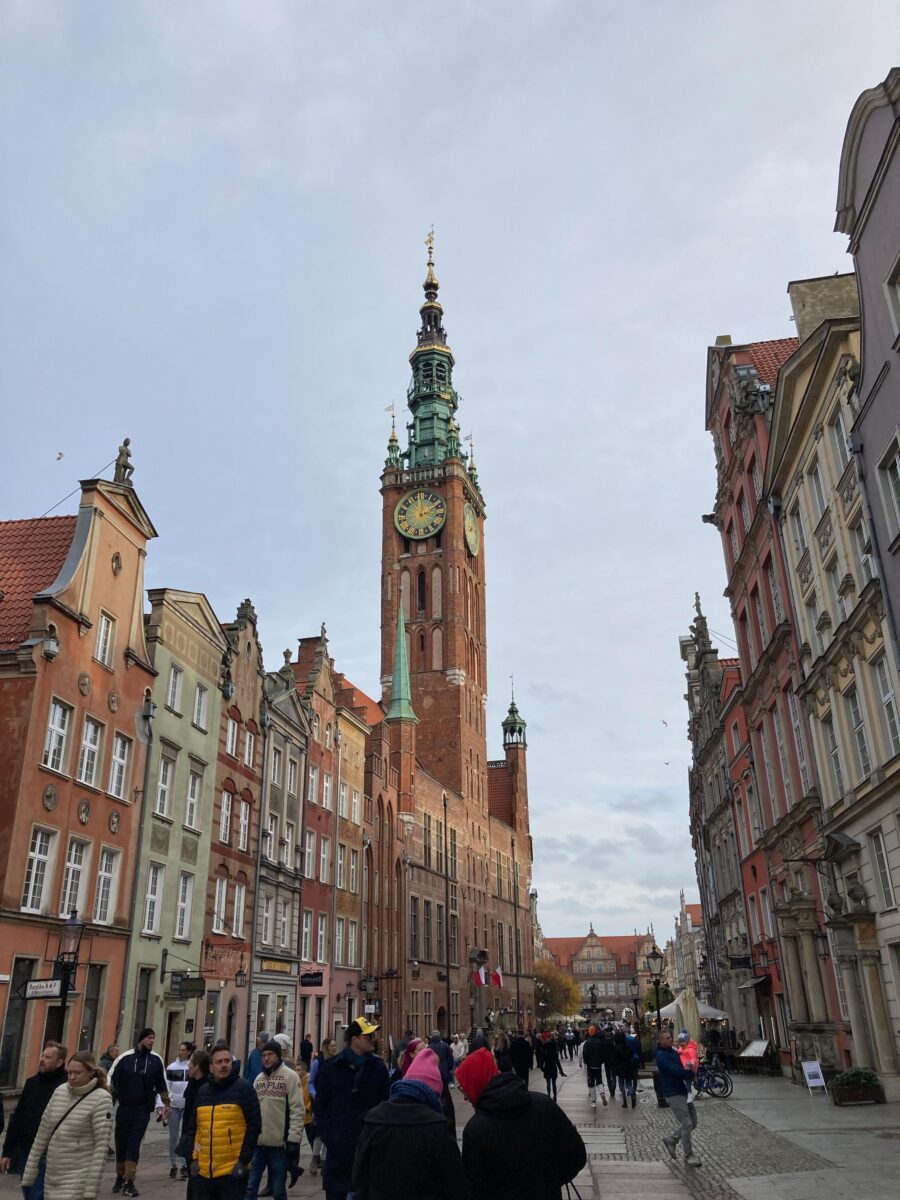
Today, the Old Town of Gdańsk is the center of everything. Each of the 2 million tourists that come to Gdańsk each year will walk the streets of the Old Town, admiring the buildings and visiting some iconic spots, some which will be listed later in this list. Much of this is centered on Ul. Długa. Running from the gold gate to the green gate, here you will find the most beautiful buildings of Gdańsk, as well as its most iconic monument, the Fountain of Neptune. Take a picture here and admire the architectural beauty. For the full experience, take some steps on ul. Piwna, and ul. Mariacki.
All in all, the Gdańsk Old Town is one of the best places to see in all of Poland, and it would be remiss to skip it on a trip to Gdańsk. It is truly the best of the best things to do in Gdańsk, a place that should leave you inspired and satisfied.
Cost: Walking around the Old Town of Gdańsk is free! However, I am sure you will stop in a restaurant, souvenir shop, or bar along the way, so any costs are of your own choice!
Hours: The Old Town is open 24/7, as people do live on these streets. The most popular times are from just before lunchtime, until after dinnertime. Earlier in the morning is the best time to walk around the city if you want to do it with more peace. Also, do note that many of the better bars in Gdańsk are in the Old Town, so at night, it might get a bit rowdy in some places, but it should never be unsafe.
Transit Information: The Old Town is well connected to other places in Gdańsk by public transport. Firstly, there are two train stations within walking distance of the Old Town. Additionally, there are multiple tram lines running to the south and the west of the Old Town, as well as many buses. These trams and buses go pretty much anywhere in the city. If you are trying to park, do note that parking is scarce. But one place you might try to park is at Forum Gdańsk, a large mall right next to the city center. Otherwise, there are parking lots spread across the city.
2. Explore the famous canals of Gdańsk
Description: As mentioned in the earlier entry, Gdańsk feels like Amsterdam. This is due to the canals present in the city! In earlier history, the mighty Vistula River flowed into the Baltic Sea near Gdańsk, but since the river has been rerouted, canals have taken over the landscape of Gdańsk. These canals are very important to the history of Gdańsk, a major maritime power and the former busiest port on the Baltic Sea! Many thousands of ships have stopped in these canals to drop off their goods, and you too should walk around the canals.
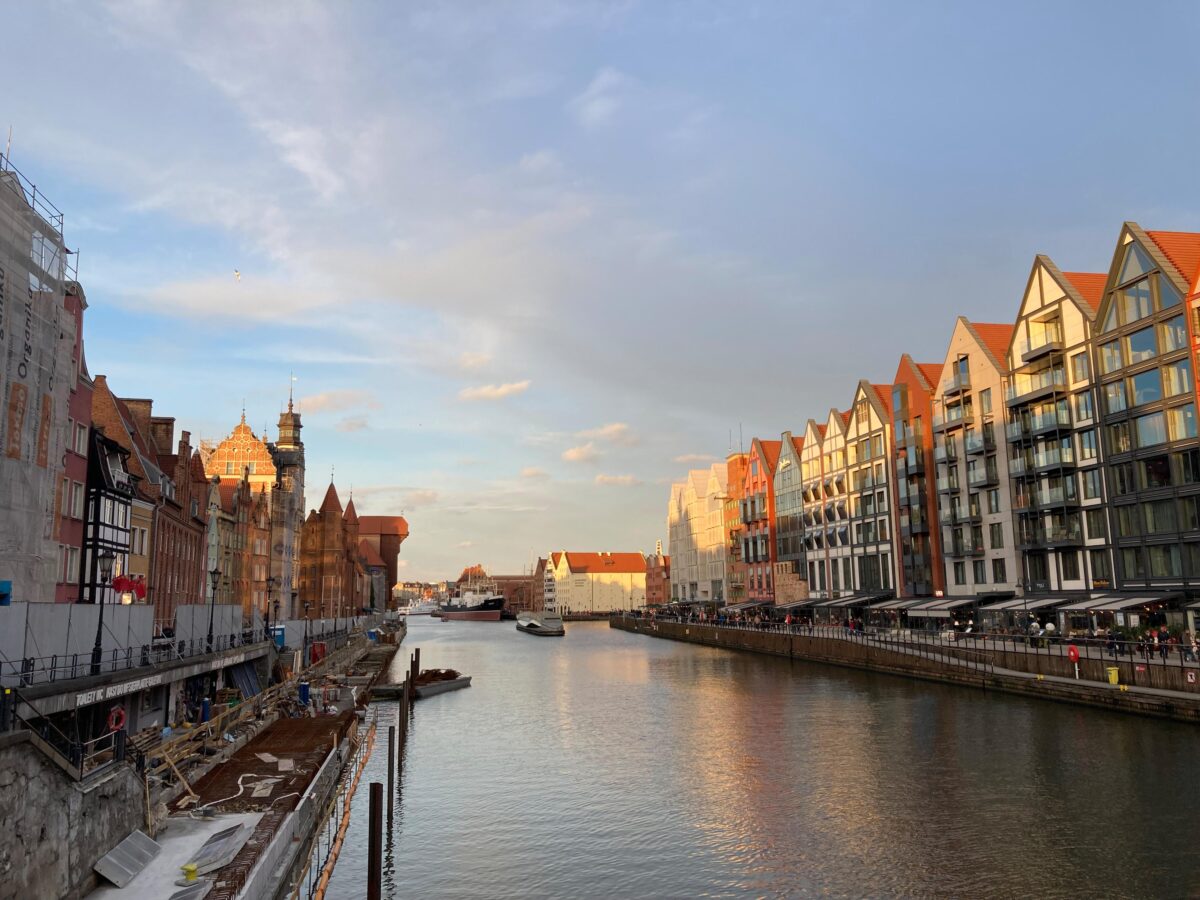
While the canals have their history in shipping, today, the canals are a beautiful place to walk, with massive townhouses lining both sides of the main canal. On the east side, after crossing Zielony Most, the green bridge, you will find a massive number of delicious restaurants to try, with stunning views of the city across the canal. One of the things to see is Stary Żuraw Portowy. This used to be a crane that lifted the goods out of the ship onto the dock below. While temporarily closed as of writing, it is still a view to admire!
Otherwise, just walk around the various synthetic islands and enjoy the views or walk across some of the bridges! These bridges are unique, in that they lift to let ships come through and dock. One is
Kładka Św. Ducha, a bridge that rotates sideways to create a barrier with two shipping lanes. The other is Kładka Zwodzona na Ołowiankę, which lifts high in the sky every 30 minutes to let big ships through to the marina. All in all, the canals are a charming and romantic place to take a walk, and certainly amongst the best things to do in Gdańsk.
Cost: Walking around the canals, like the Old Town, is also free. All costs are of your own choice!
Hours: You can walk around the canals any time you like. Like the Old Town, it will be especially busy around lunch and dinner, and the most peaceful time will be in the morning.
Transit Information: Given the canals are close to the Old Town, read the earlier entry for information about transit!
3. Visit the historic Town Hall
Description: If the Old Town is the most iconic part of Gdańsk, the Town Hall, right in the center of the Old Town, is the most iconic place in Gdańsk. This building has been in existence since the Middle Ages, hundreds of years ago, and has historically been the seat of the government in Gdańsk, managing the ports, taxes, and keeping the city functioning. However, this building is not your bland, boring town hall. The Town Hall was built in the Gothic-Renaissance style, with gaudy towers of gold, painted clock faces, a brick exterior, and other fancy touches. And its tower towers high into the sky, making it visible from all over the city.
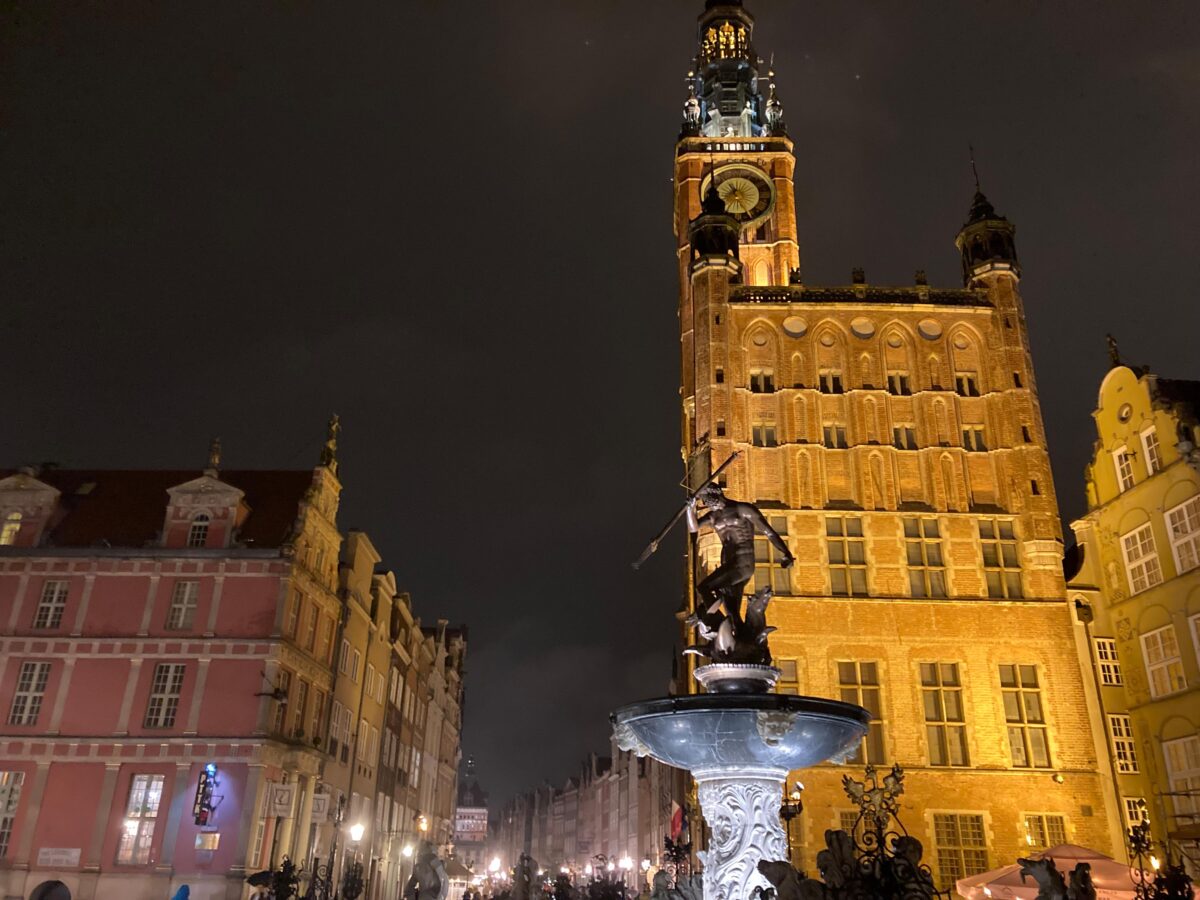
While many tourists choose to admire the building from the outside, you can also go inside via the Museum of Gdańsk. This museum tells you the town’s history through various exhibits, placed on various interior floors. This not only teaches you some interesting facts, but also gives you access to the beautiful interior of the building. Finally, if you have the legs for it, you can scale the 80-meter (260 feet) Town Hall Tower, for a panoramic 360-degree view of the Old Town, and Gdańsk beyond. I believe this view is the best you can get anywhere in Gdańsk and is worth the admission price.
The final highlight of this beautiful building, one of the best things in Gdańsk, is the historic carillon in the tower. First built in 1561, this hefty instrument plays a tune on the hour every hour (except in the middle of the night). The current edition was built in 2000 and consists of 37 bells. On Saturdays at noon, you can get an extra special treat when a professional musician plays a longer concert with the carillons. No matter where you are in the city, you are sure to hear these beautiful bells ringing and echoing through the streets.
Cost: A ticket to enter costs 23 PLN/16 PLN reduced. Or you can buy a family ticket, for 2 adults and up to 6 children, for 60 PLN. This includes admission to the view tower during the summer. Of course, you can also admire the outside for free. Finally, you can visit the interior and tower for free on Mondays. Tickets are sold until 45 minutes before closing.
Hours: The Museum is open for different hours depending on the season. During the summer (usually from June to October), the museum is open from 10 AM to 6 PM from Wednesday to Sunday, and from 12 PM to 6 PM on Mondays. During the rest of the year, those hours change to from 10 AM to 4 PM on all days the museum is open. The museum is always closed on Tuesdays and most major holidays.
Transit Information: Given that the Town Hall is in the Old Town, view that entry for all relevant transit information. Do be aware you will have to walk at least a little to get to the Town Hall, but the walk is flat and paved.
4. Climb St. Mary’s Basilica
Description: The other icon of the Gdańsk Old Town is St. Mary’s Basilica. Built in the Brick Gothic style like many other churches and buildings in this part of Poland, it is one of the largest brick churches by volume in the entire world! And this makes sense, everywhere you walk in the city you are bound to notice this looming, but beautiful Basilica. As you walk inside, you will get to experience this massive feel even more, with high vaunted ceilings above the main worship area that allegedly fits 25 thousand people (I am not so sure that would be comfortable).
Walking around the church provides you views of the gaudy side altars, artwork, and other typical Catholic church things. But overall, the building, originally finished in 1496, this church has a long history, from Catholicism, to Lutheranism, back to Catholicism, and control by Germans and Poles. You can learn a little bit about this history on the boards inside the church. You can also attend screenings of a movie about the history of the church, shown at 1 PM on Fridays in English, or otherwise in Polish every day at 12:15 PM.
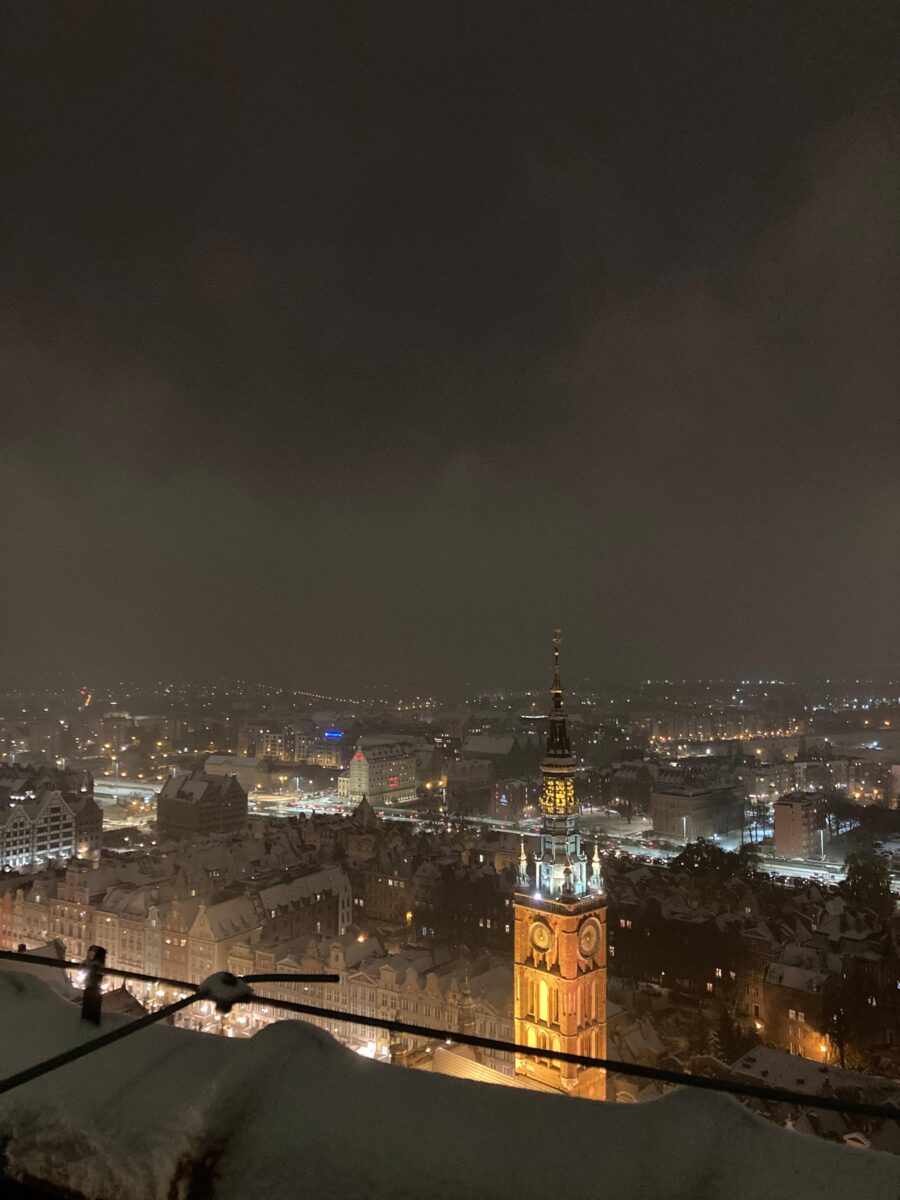
This Basilica’s final attraction is the viewing tower at the top of it. You will have to work hard for the view provided, walking up multiple claustrophobic spiral staircases, and then a full set of wooden stairs, 402 in total, to get to the top. And once there, the viewing platform is small, and in my opinion, not quite as good as the view provided by the Town Hall. But, if you are visiting in the winter, this is your only choice, and still a good choice to get an amazing view of the city of Gdańsk.
Cost: Entering the Basilica is free. You do have to pay if you want to go up the viewing tower. But the price is inexpensive. A ticket to the top costs 16 PLN/8 PLN reduced.
Hours: The Basilica is open year-round. From Monday to Saturday, you can visit from 8:30 AM to 5:30 PM (note that these hours are different on Google, but these are the hours provided by the website). On Sundays, you can visit from 11 AM to 12 PM, and then again from 1 PM to 5:30 PM. During July and August, these hours extend by one hour to 6:30 PM. Entry to the Basilica by tourists is not allowed during times of Holy Mass, unless you plan to dress nicely and attend the Mass yourself.
For the viewing tower, hours are from 11 AM to 4 PM from Monday to Thursday, and from 10 AM to 6 PM from Friday to Sunday (except during mass). The last entry to the tower is done at the listed closing time. Additionally, during bad weather, the tower will be closed to visitors.
Transit Information: As St. Mary’s Basilica is in the Old Town, view that entry for complete transportation information.
Best Things to do in Gdańsk: Museums
Gdańsk has a lot of top-notch museums to visit. While Gdańsk is not a large city, it has had some very important events, both for Poland and the entire world, start within its city limits. You can also learn about some important industries of the area, or just admire some art. Read on to learn about these museums that are some of the best things to do in Gdańsk.
5. Visit the European Solidarity Center
Description: The European Solidarity Center is an important place to visit in Gdańsk, due to the important historical moment in Poland it focuses on. Gdańsk was the center of the Polish Solidarity Movement, a movement to undermine the Polish Communist Government during the 20th century, when Poland was a Soviet satellite state. Led especially by Lech Wałęsa, an electrician at the Gdańsk shipyard, it was an attempt to gain freedom and protest for a trade union to give better rights to workers. This was the first of many moments in the 1980s in Poland that eventually led to Poland becoming a democratic nation once again.
At the museum, you will learn all about the lead-up to this event, the details of the event, and the repercussions of the event. There are many engaging rooms, with artifacts, letters, informative signage, and video archives telling the full tale of this event. When I visited, it was easy to spend at least 2 hours at the museum, if not more. I would highly recommend a visit!
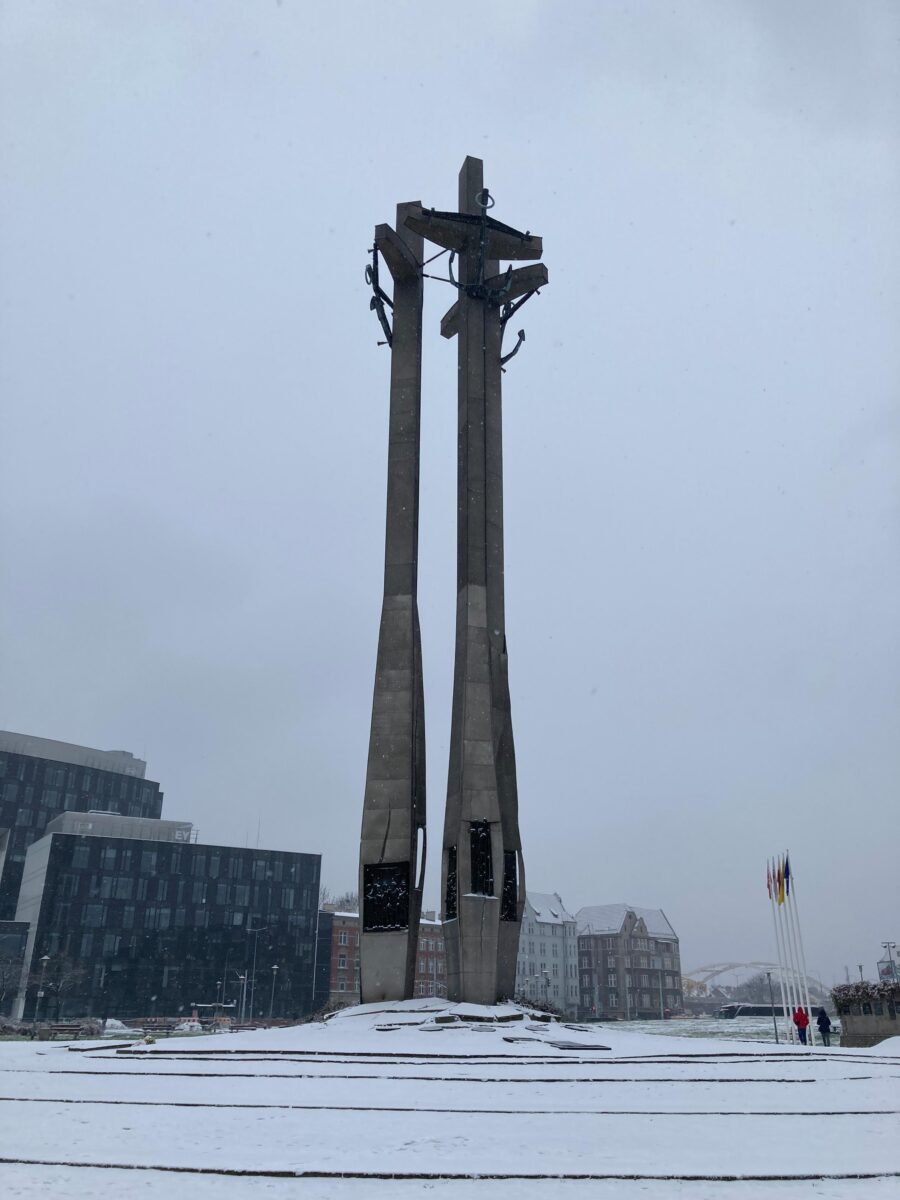
Cost: A ticket for the museum costs 30 PLN/25 PLN reduced. There are also a variety of family packages available. You can buy tickets in advance at the website listed above, but I would say you do not need to unless you plan to visit on a busy summer weekend.
Hours: The hours change depending on the season. From May to September, the exhibits are open from 10 AM to 7 PM from Monday to Friday, and from 10 AM to 8 PM on weekends. From October to April, the exhibits are open from 10 AM to 5 PM on Mondays, Wednesdays, Thursdays, and Fridays, and from 10 AM to 6 PM on weekends, with the exhibits closed on Tuesdays. Otherwise, the museum is closed on major holidays.
Transit Information: The European Solidarity Center is found just north of the Old Town. In fact, using either Tram 8 or Tram 10 from the main train station, it is only 1 tram stop north to get to the dedicated stop for the museum, Plac Solidarnosci. Otherwise, it is about a 20-minute walk from the center of the Old Town, which is a good walk, as it takes you through many other important sites of the city.
6. Visit the Museum of World War II
Description: World War II might be one of the most studied events in world history. For those of you interested in such history, or just in a very engaging museum experience, the Museum of World War II in Gdańsk is certainly one of the best things to do in Gdańsk. The invasion of Poland by German forces was the event that started WWII, and while some air raids happened in other parts of Poland, German forces first set foot on Polish territory in Gdańsk. Thus, the museum focuses on the effects of the war on Gdańsk, but also Poland as a whole, telling a complete and comprehensive story.
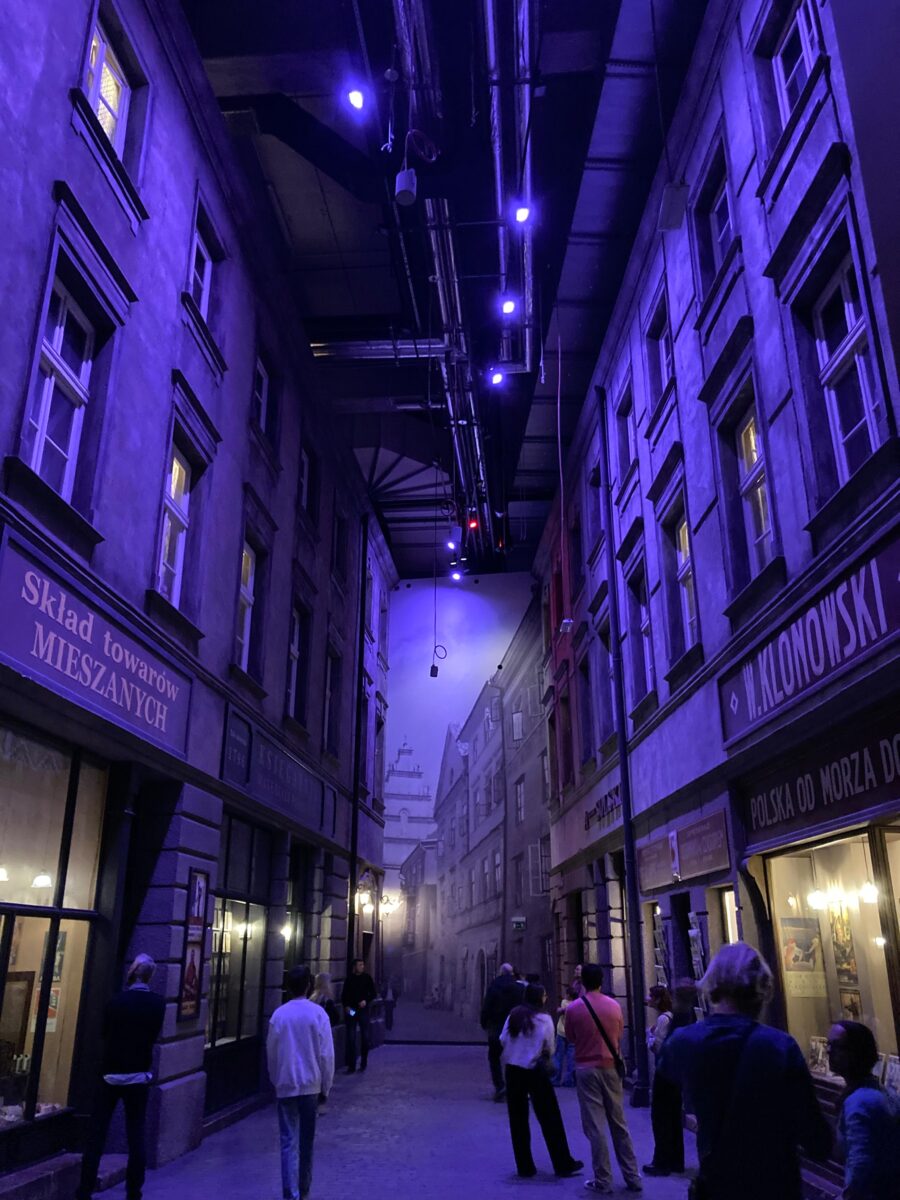
The museum is made up of almost 20 different exhibits. It starts with the uprising of fascism in European powers, and moves quickly into the invasion of Poland, and all the horrors associated with the Nazi occupation of Poland. It covers the first invasion in detail, but also what life was like in Poland during the war. It also has a large section dedicated to the Holocaust and other war crimes, and then finally a section dedicated to the ending of the war, and Poland’s quest to become whole again after the war. All in all, this museum is very good, and this museum should be at the top of your list of museums to visit in Gdańsk.
Cost: A ticket to the main exhibition costs 25 PLN/18 PLN reduced. There are also family tickets available for 60 PLN, which includes admission for 2 adults and 2 children, a savings of 26 PLN. If you want to race through the exhibition in 30 minutes, then tickets only cost 15 PLN/10 PLN reduced. Do note the size of the museum means you might want to allot at least 2 hours, if not 3, to see the entirety of the museum.
Hours: The hours depend on the season. From September to June, the museum is open on Tuesday from 10 AM to 4 PM, and from Wednesdays to Sundays from 10 AM to 6 PM. During July and August, the museum hours extend from 10 AM to 8 PM, Wednesday to Sunday. The museum is always closed on Mondays and major holidays.
Transit Information: The Museum of World War II is about a 15-minute walk north from the Old Town. Additionally, the museum has its own bus stop. There are three buses with service from the central train station, Bus 106, Bus 130, and Bus 208, each also serving other parts of Gdańsk. If you are interested in seeing the destination associated with the museum, Westerplatte (more on this location later), Bus 106 goes directly between the two. Parking, if you have a car, is scarce in the area, so I would recommend walking or using public transport.
7. Visit the Amber Museum
Description: Amber is one of the most important industries in Gdańsk. Gdańsk is oftentimes termed as the Amber capital of the world. Amber has been abundant in the area for many centuries due to the Baltic Sea practically being a gold mine for amber. In fact, the Kaliningrad area, an exclave of Russia, is full of amber. Sea winds blow amber across the Baltic Sea to the beaches of Gdańsk and the northern cities of Sopot and Gdynia. Even today, you can try to find amber on the beaches. Nevertheless, amber became an important part of Gdańsk’s wealth and trading power.
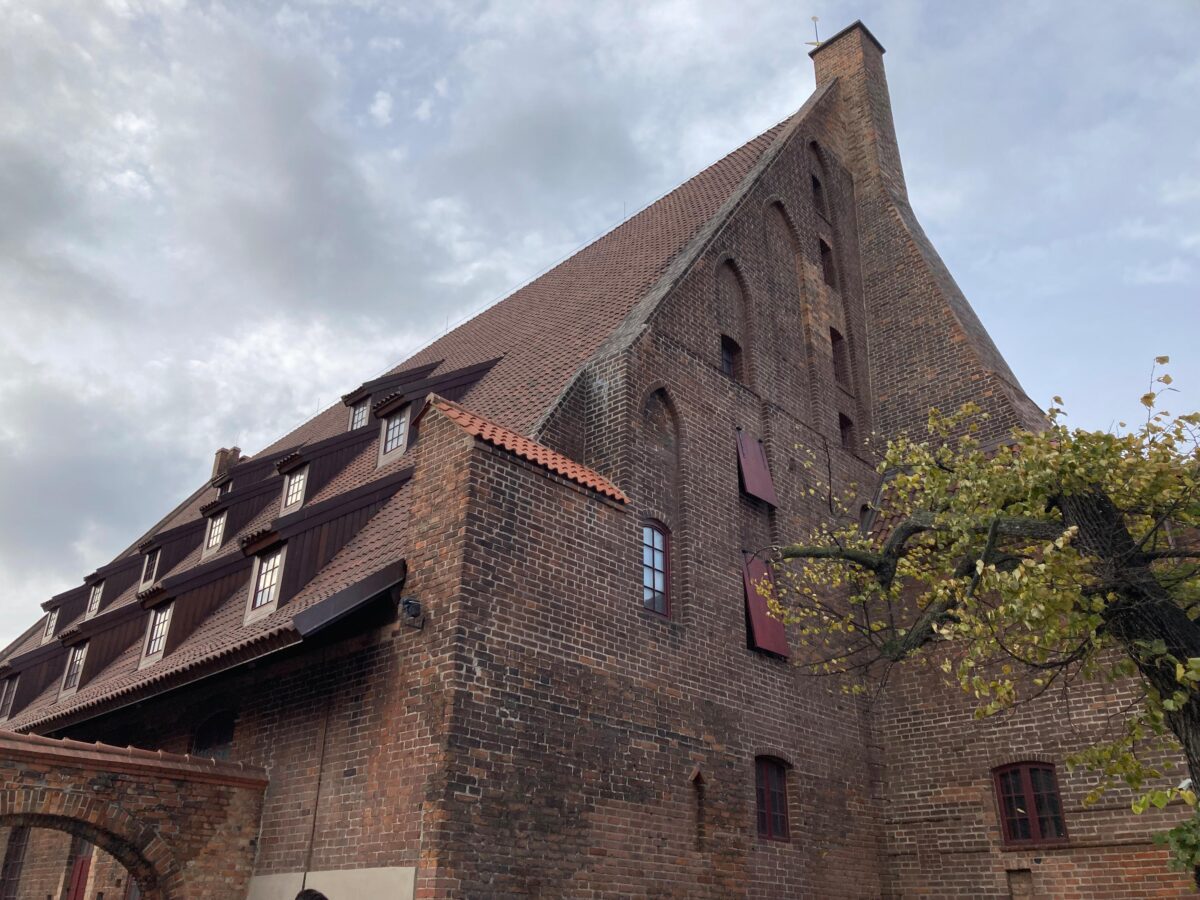
With this history in mind, the Amber Museum aims to explain all this history with engaging exhibits. Located in an old mill building found between two canals, you will find an exhibition detailing the history of amber back many years of time, and a detailed description of how amber was created. As you move upwards, you will find exhibits about how amber has been included in culture, especially in Gdańsk, and great displays of artifacts and artwork made from the abundant amber found in Gdańsk. Finally, visit the museum shop to buy a souvenir to take home! All in all, this is a great place to spend some time, and certainly one of the best things to do in Gdańsk.
Cost: A ticket costs 32 PLN/22 PLN reduced. You can also buy a family ticket for up to 2 adults and 6 children for 80 PLN. The museum is free on Mondays.
Hours: The museum is open from 10 AM to 6 PM every day except Tuesdays, when the museum is always closed. Additionally, the museum is closed on major holidays.
Transit Information: The Amber Museum is on the northern edge of the Old Town. So, view that entry on the list for complete information about getting to the museum.
8. Visit the National Museum in Gdańsk
Description: The National Museum in Gdańsk is part of a tradition of great branches of the National Museum in other Polish cities, such as Warsaw and Wrocław. while the branch in Gdańsk is not as big, or holding as impressive artwork, it is still worth a quick visit. The building itself is beautiful, part of a former monastery. Inside, you will find large collections or religious art, Polish artifacts from Gdańsk, and some special collections, such as the impressive assortment of tiles and ceramics, or one of the largest collections of tin in the world.
All in all, while this museum may be small, you should still pay a visit! It is a good way to kill time for an hour and is much less crowded than other museums in the area. Again, while it is not huge, there is still enough to be interested in! But I might recommend visiting on the free day, which is Friday, to really get your money’s worth. But this museum is still one of the best things to do in Gdańsk, especially when the temporary exhibit is a good one!
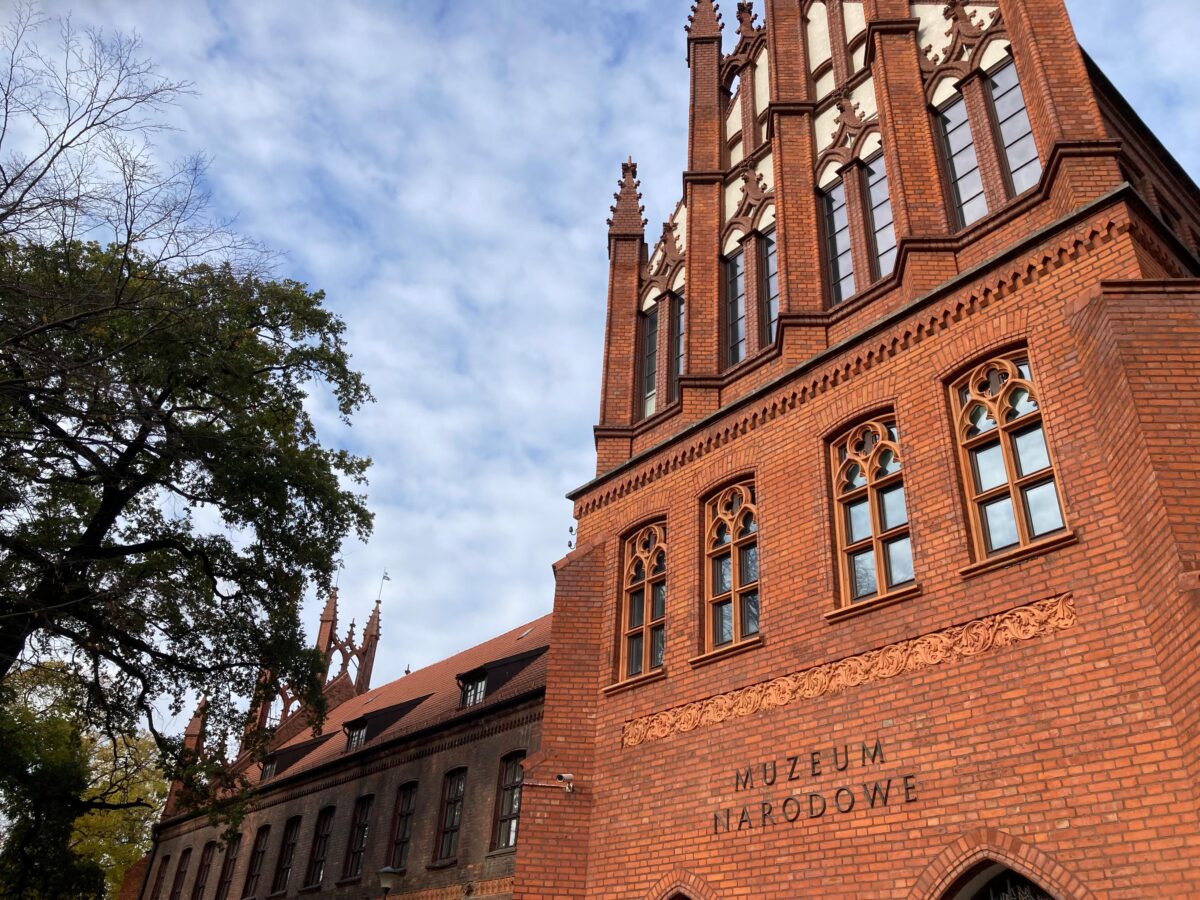
Cost: Tickets cost 20 PLN/12 PLN reduced. If you are a Polish student reading this, you get in for 1 PLN! As mentioned previously, the museum is free on Fridays.
Hours: The museum is open from 11 AM to 6 PM, from Tuesday to Sunday and closed on Mondays. The museum is sometimes open on major holidays, so check their website, linked above for more specific details if you are visiting Gdańsk on a holiday.
Transit Information: The museum is found just south of the Old Town, about a 10-15-minute walk away. There are also a couple of bus stops near it if you are arriving from other parts of town. Torunska is served by buses from almost anywhere in the city, except the north. Muzeum Narodowe bus stop is served by Bus 106 and Bus 111 from the city center. If arriving from the north, just take the regional train into Gdańsk Śródmieście train station. For parking, there is a small lot across the street to the east.
9. Visit the National Maritime Museum in Gdańsk
Description: Gdańsk has always been an important maritime center. Thus, the National Maritime Museum in Gdańsk is a must-see, one of the best things to do in Gdańsk. Here, you will learn all about the heritage of the Poles along the Baltic, with the museum’s goal to protect this heritage as a major cultural institution of Poland. Upwards of 350 thousand people visit this museum every year, and there are many different exhibits to visit. The main location is the Granaries on the east side of the canals, home to the major exhibits detailed the history of maritime activities in Gdańsk, and Poland.
Other places to visit of note included the SS Sołdek ship, the oldest remaining post-WWII seagoing ship in Poland. It has a storied history as a workhorse of Polish commerce. You can learn all about this history while onboard. Additionally, you can cross the canals to the Maritime Cultural Center, a more modern exhibit where you can visit two permanent exhibitions, one about people, ships, and ports, and the other about boats of the world. This center is attached to the old crane mentioned previously, which is currently under renovation. All in all, this museum supplies a lot of information, and has many fun engaging exhibits, making it worth your time.
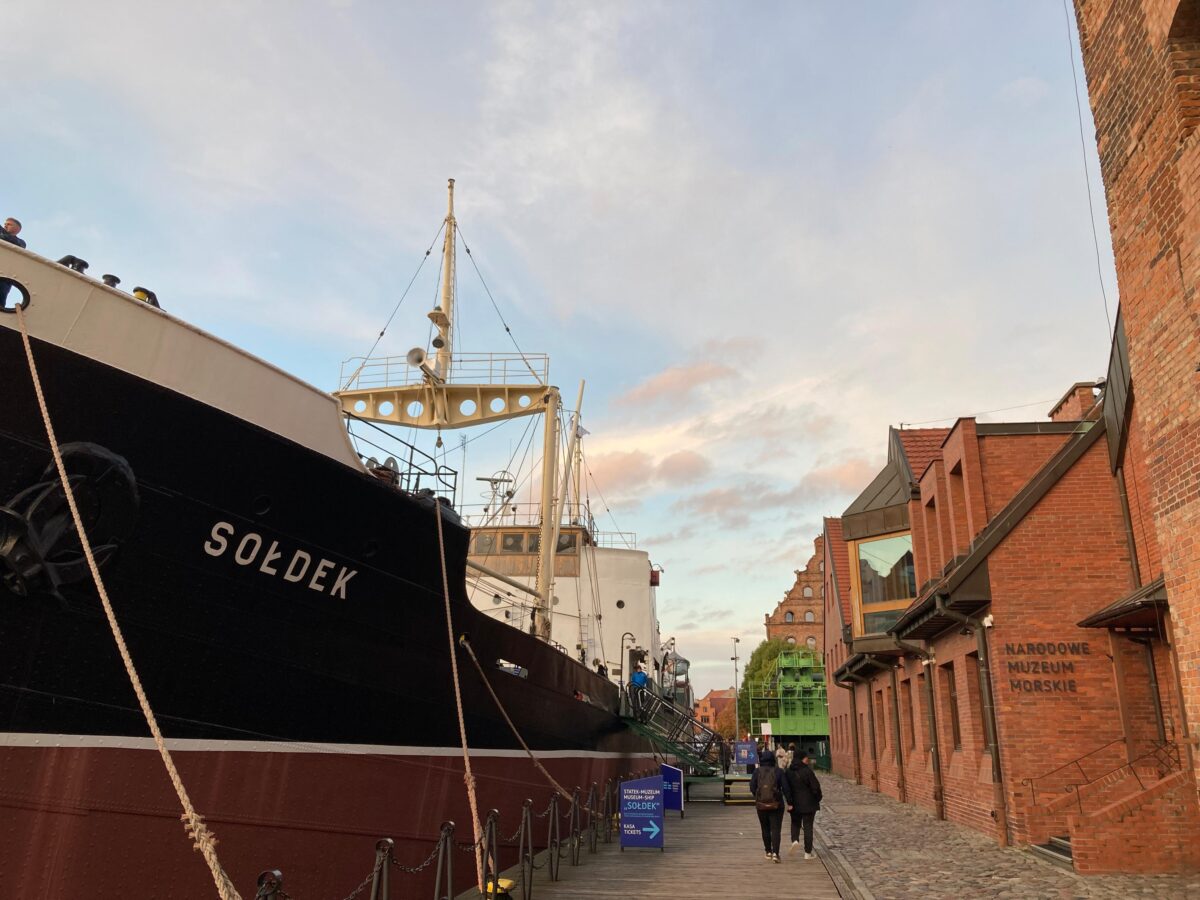
Cost: Tickets can be bought for various places at the museum. Tickets to the permanent and temporary exhibitions cost 15 PLN/10 PLN reduced. On Wednesday, these exhibits are free. For just the temporary exhibitions plus the Maritime Gallery, tickets cost 10 PLN/8 PLN reduced. To board the ship, you will have to buy a joint ticket with the permanent and temporary exhibits, for 47 PLN/35 PLN reduced. Tickets to the Maritime Cultural center cost 17 PLN/13 PLN or 20 PLN/15 PLN depending on which exhibit you choose. To add the Cultural center to everything else, you will pay 64 PLN/48 PLN. Visit the website for more information about this complicated ticket scheme.
Hours: The hours of this museum are unpredictable and change quite often. For this reason, please visit the website linked above for the hours. There is no clear pattern about when and why they are changed, with sometimes even the opening days being changed from one week to another. But, except the museum to only be open for short hours in the winter during the week, and for slightly longer on weekends, and for longer hours throughout the summer.
Transit Information: The museum is along the canals of Gdańsk in the Old Town. So, please view the prior entry on the Old Town for information about getting to the museum.
Best Things to do in Gdańsk: Outdoors
Gdańsk is also in a beautiful part of Poland. From beaches to tree-filled hills ripe for hiking, those of you who are nature lovers will find some lovely things to do. And best of all, this nature is easily accessible using Gdańsk public transportation. Read on to learn more about these outdoor treasures, amongst the best things to do in Gdańsk.
10. Walk around Westerplatte
Description: Westerplatte is one of the most important historical sites in all of Europe, one of the top landmarks of Poland, and one of the best things to do in Gdańsk. Westerplatte pairs nicely with a visit to the Museum of WWII, as the German land invasion started at the army bastion found on the Westerplatte peninsula. Here, a small cohort 180 of Polish soldiers fought bravely against the 570 Nazi invaders, succeeding in holding them off for an entire week. The Poles fought so bravely that the commander of the Polish forces, Major Henryk Sucharski, was allowed to keep his sword as he was taken prisoner.
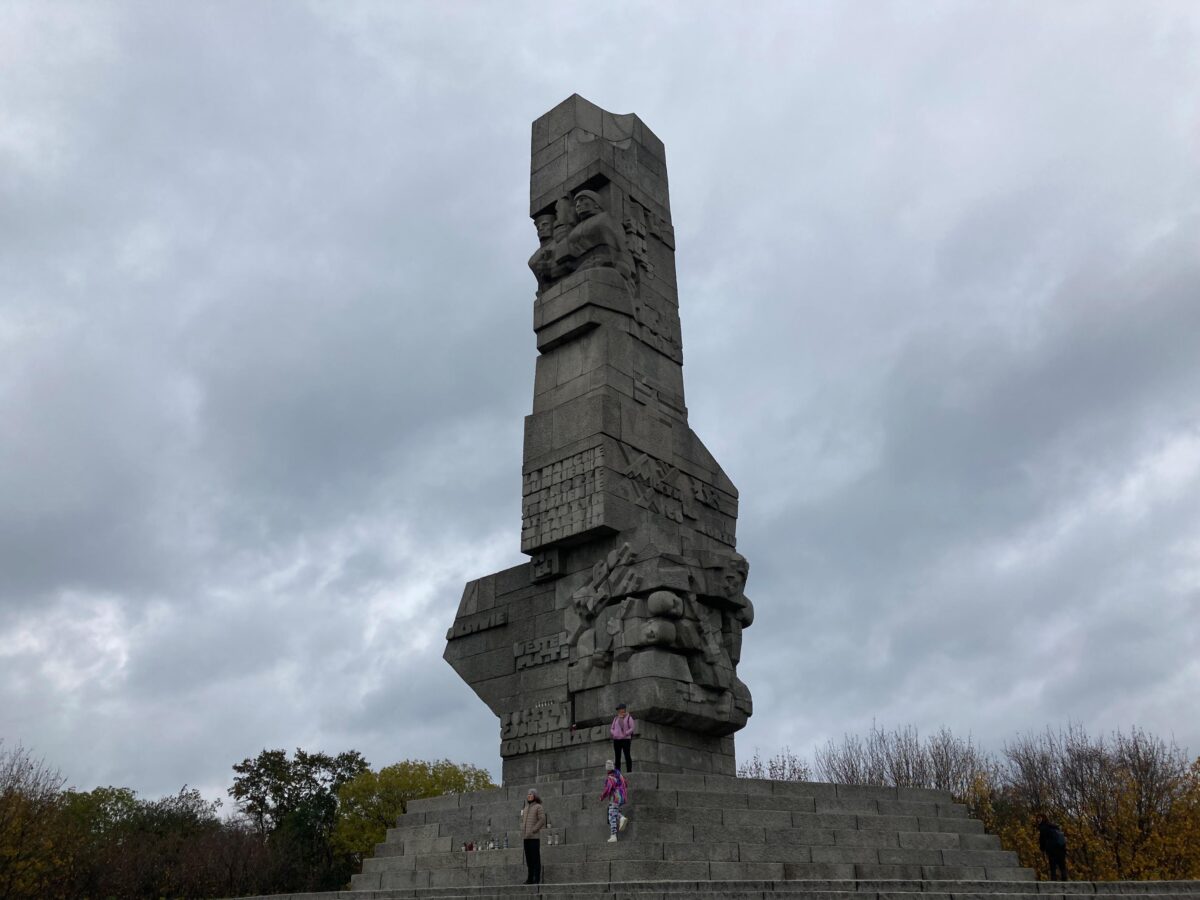
Today at Westerplatte lies an imposing stone monument dedicated to all the victims of WWII, with symbolism also present to stop all future wars. Additionally, as you walk around, you will find signs with more details about what happened at Westerplatte during the war, remains of the old fort of Westerplatte that was bombarded mercilessly, and the mass grave site of the many Poles who died fighting protecting Westerplatte. There is also a nice promenade where you can walk along the beach for quite a long way. All in all, Westerplatte is a must-do when coming to Gdańsk, both for history, and the quiet and solemn nature present at Westerplatte.
Cost: Walking around Westerplatte is entirely free!
Hours: Westerplatte is open 24/7, as it is part of a public park. Note that going at night is a bad idea, as you will have to take an expensive taxi to get home if you do not have a car.
Transit Information: Westerplatte, while not far in terms of actual distance from the city center, takes quite a while to get to. For public transport, you can take Bus 106 from the main train station, or Bus 138 from the same place. Both take long winding routes on the way there that means a trip to Westerplatte requires about 45 minutes by bus. Also note that during the offseason, these buses run quite infrequently, so you will have to spend at least an hour there, if not more, before being able to get a bus back. Also note there is no ticket machine at Westerplatte, so buy your transit tickets in advance.
The best way to get to Westerplatte is by car. There is ample parking space, which may cost between 5-10 PLN depending on the season and how long you plan to spend. Another choice is the Westerplatte tourist ferry that leaves from near the Old Town along the canals and takes you on a short boat ride to Westerplatte. However, this choice is quite expensive, at 75 PLN/60 PLN reduced for a round-trip ticket, which is almost 10 times more expensive than a bus ticket, and still takes 40 minutes. Thus, only do the ferry if you want the experience.
11. Tan on Jelitkowo Beach
Description: Jelitkowo Beach is a beautiful stretch of sandy beach north of the center of Gdańsk, the best beach Gdańsk has to offer, and one of the best beaches in all of Poland. It is slightly less busy than some of the more famous beaches nearby, but still equally beautiful, with stunning views of the Baltic Sea. And it is easy to get to via public transportation, and with the changing rooms and showers provided, you do not have to worry about having a car to enjoy swimming and tanning at this beach.
Additionally, there are a few things to do in and around the beach. On the outskirts of the beach is the wooded President Ronald Reagan Park, a nice place to take a breather amongst the trees, with playgrounds, sports fields, and many trails and places to relax to appreciate. Furthermore, if you continue to walk south along the beach, you will make it to Brzeźnie Pier, a free pier that is a perfect place for a photo or to watch the sunrise. Otherwise, just enjoy the sandy stretch the beach has to offer. Jelitkowo Beach is truly one of the best things to do in Gdańsk.
Cost: Jelitkowo Beach is free to take advantage of.
Hours: Jelitkowo Beach is open all hours and days of the year. However, it only makes sense to enjoy the beach during daylight hours. And, during the winter, the weather will not be the most pleasant you have ever experienced. I would recommend getting up early or staying up late to watch the sun rise or set for an amazing experience.
Transit Information: The best way to get to Jelitkowo Beach is to take a tram. Trams 2, 6, and 8 all run to the Jelitkowo tram stop, from the main train station in Gdańsk, as well as other major points in the city. This journey takes about 40 minutes. Your other choice is to take a regional train to Gdańsk Oliwa train station, and then take Bus 143 to the Jelitkowo stop. Otherwise, you can also drive, but parking is sparse.
12. Admire Oliwski Park
Description: Oliwski Park is a beautiful green space found in a quiet part of the city often missed by tourists! During my first visit to Gdańsk, I had a local show me around, and was impressed! Oliwski Park is certainly one of the best things to do in Gdańsk, and you should not skip it. The history of the park is based on the history of the Oliwski Stream that runs through it, where monasteries were headquartered as far back as the 10th century. In the 16th century, these monks created a garden that became popular for famous visitors, such as Polish kings.
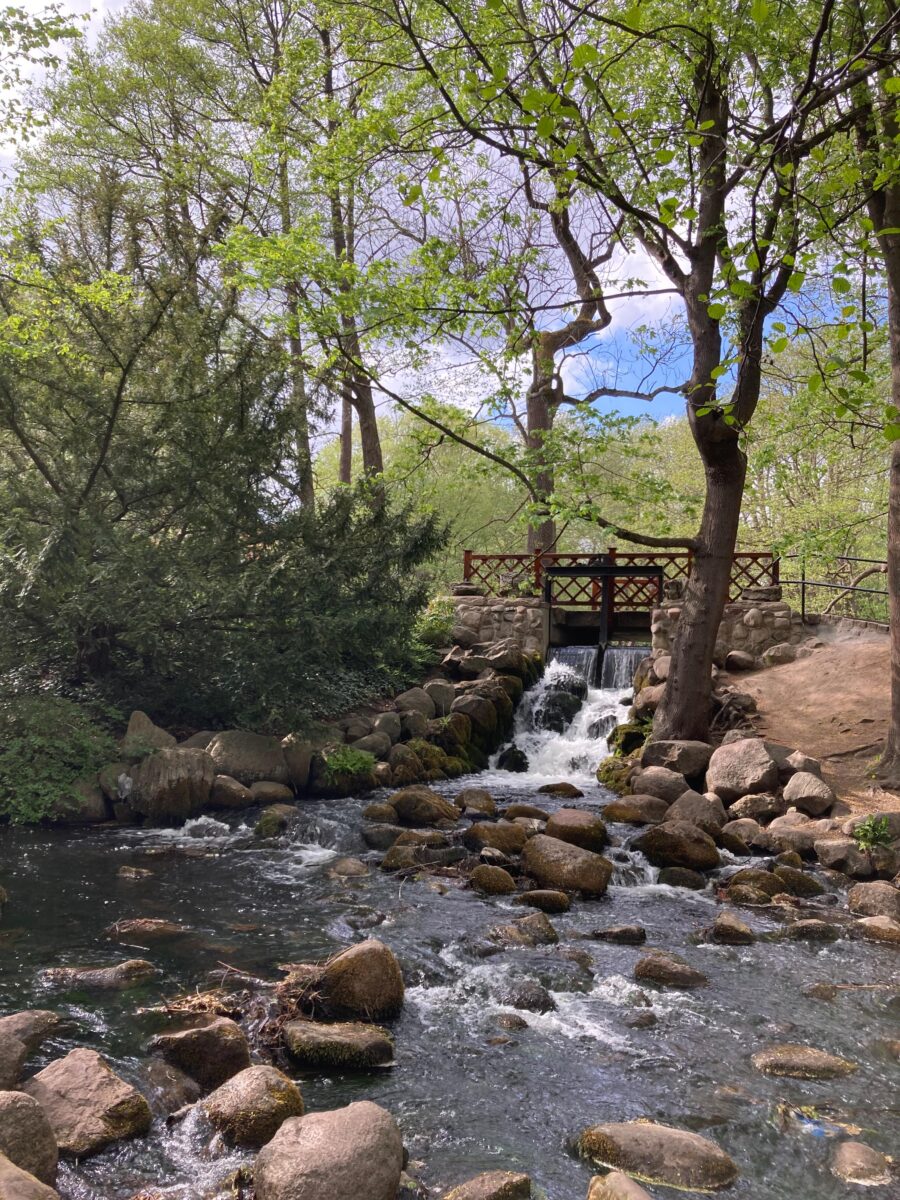
Eventually, it became open to visitors in the 18th century, and has been open ever since. Within the park, you will find a bunch of beautifully manicured gardens, rows of trees covering wide paths, ponds and streams, and even little waterfalls. Special gardens include the English and Chinese Garden, the Japanese Garden, and the Botanical Garden. There is also a Palm House on site where you can admire the plants of warmer climates.
The other attraction within the park is the Oliwska Cathedral, a beautiful baroque and rococo church, full of gaudy art and other religious iconography. A step inside is a step back in time. Overall, Oliwski Park is the best park experience you can get in Gdańsk, and it is entirely free! Do not miss it if you have the time.
Cost: Entry to the park, the Palm House and Cathedral is free!
Hours: The park is open from May to September from 5 AM to 11 PM, and from 5 AM to 8 PM from October to April. The Palm House is open from Tuesday to Sunday from 10 AM to 6 PM and is closed on Mondays. I could not find hours for the Cathedral, but assume similar hours to the Palm House, with its being closed to tourists during Mass on Sunday.
Transit Information: There are a lot of options to get to the park. Firstly, there is the Gdańsk Oliwa train station, which is a short walk from the park. Additionally, Trams 5, 6, and 12 serve the Oliwa tram stop from all over Gdańsk, with Trams 6 and 12 directly from the central train station in Gdańsk. Finally, there is some paid parking available, with small lots next to the Cathedral.
13. Climb Pachołek Hill
Description: Found near Oliwski Park, Pachołek Hill is one of many hills west of Gdańsk. In fact, the entire west side of Gdańsk is forested hills, full of beautiful hiking trails. It is yet another area skipped quite often by tourists, which is a mistake in my opinion. But, if you have the time, and are already at Oliwski Park, climbing to the top of Pachołek Hill is worth it. You start by walking up ul. Tatrzanska, and then start climbing up the hill through a peaceful forest.
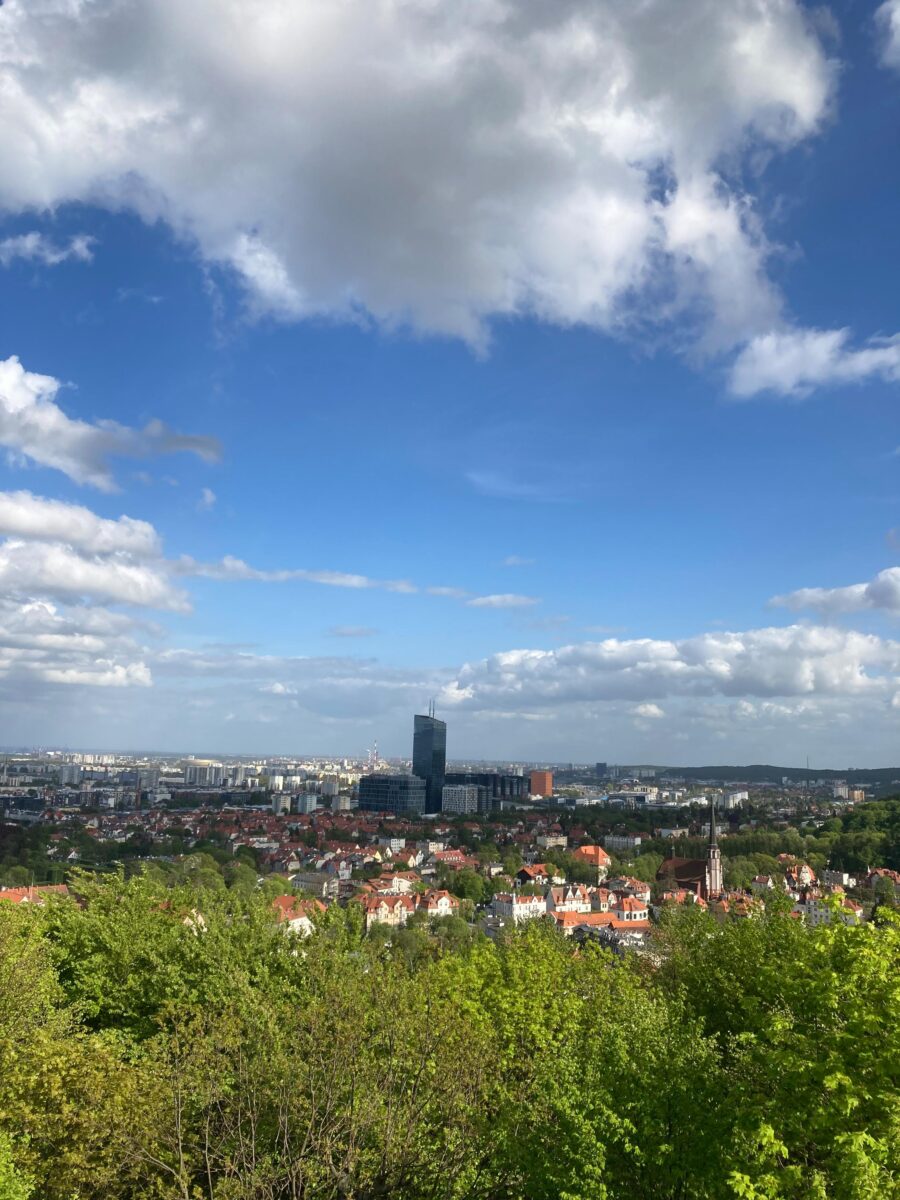
As you get to the top of this 107-meter (350 ft) hill, you will have a 15-meter (50 ft) observation tower to climb. At the top, you will be treated to stunning views of Gdańsk and the Baltic Sea! With the foliage cleared a bit to make the view even better recently, now is a better time than any to appreciate these amazing, 360-degree and entirely free views! Once you are done with the tower, climb down to Staw Młyński for a cute pond that may or may not have beavers, swans, and ducks. All in all, the climb up Pachołek Hill is a treat, one you should not skip.
Cost: Pachołek Hill is entirely free to use!
Hours: Pachołek Hill is accessible at all hours of the day and all hours of the year! Just be careful in rainy and icy weather while climbing the tower.
Transit Information: As Pachołek Hill is right next to Oliwski Park, follow the instructions for that entry to get to this location!
14. Explore the Bastions of Gdańsk
Description: For a final underrated outdoor excursion that I recently tried, consider visiting the Bastions of Gdańsk. The Bastions used to be part of the extensive fortification system that protected the southern part of what is now the historic Old Town of Gdańsk. Originally built in the 17th century, these Bastions, from the air, look like the bottom of a star, with a distinct zigzag pattern of canals, and fortifications. Today, 5 Bastions remain, mostly named after animals.
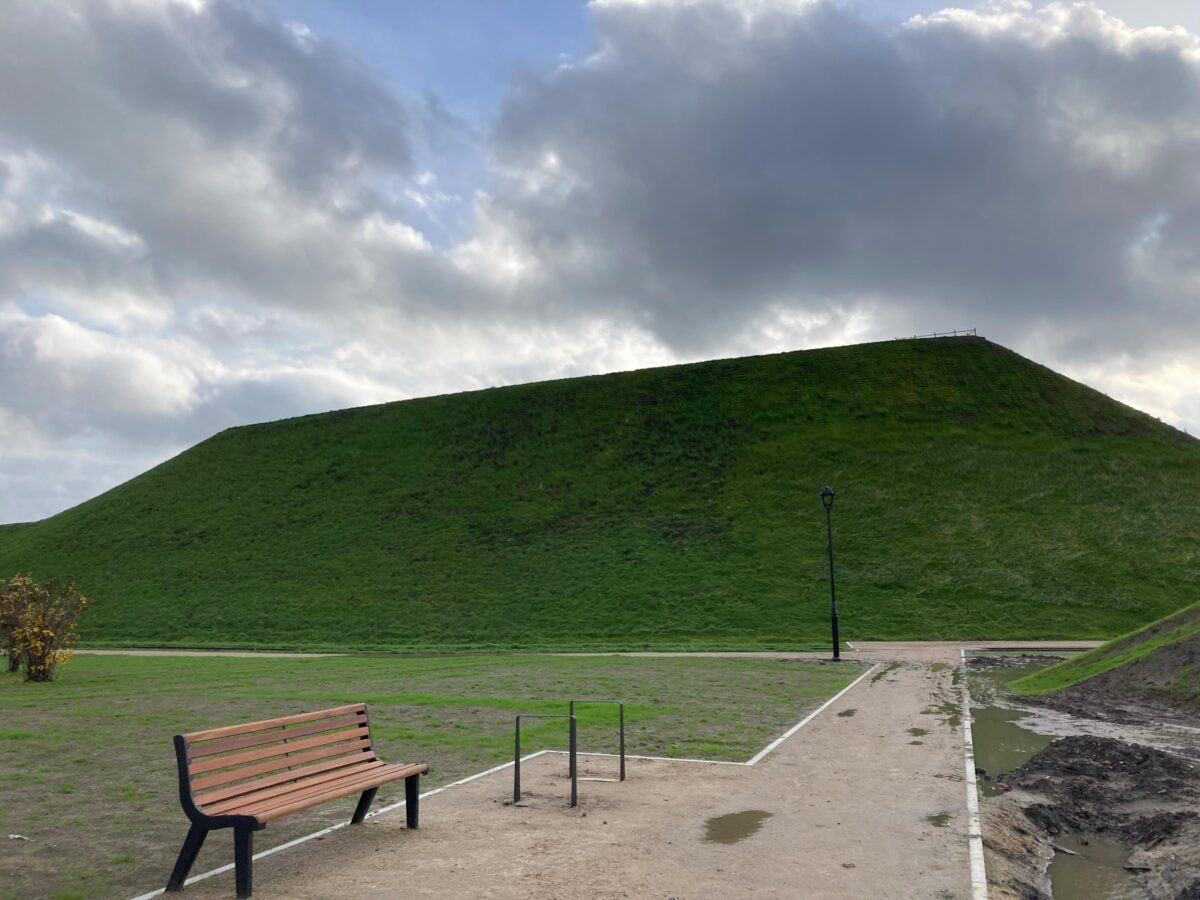
The appeal of the Bastions today is how quiet they are. Despite being only about 15 minutes away from the Old Town, when I visited recently, there was almost no one there, except a few locals walking their dogs. This is a great place to ride a bike up and down the canals. Additionally, with some new renovations soon to be done, there will be some artificial mounds in place with great views of the city. Come visit before this place gets popular!
Cost: The Bastions are free to explore.
Hours: The Bastions are open 24/7. Do note that some are under renovation right now, and are not open, but should be open soon based on when I last visited (as of November 2023).
Transit Information: You can take the bus to Bram Nizinna, taking Bus 123 from the main train station. Or you can take Bus 106 or 111 from near the main train station to Wróbla, and then walk a short distance from there. There is also a small amount of street parking available by Bastion Żubr.
Best Things to do in Gdańsk: Attractions
If you are looking for some more touristy things to do in Gdańsk, these next entries fit that bill, without being a huge tourist trap (like a haunted tower, or a wax museum). These exhibits can be kid friendly, or even a chance to experience the amazing Polish culture. Read on to learn about these attractions that are amongst the best things to do in Gdańsk.
15. Visit Gdańsk Zoo
Description: Visiting the Gdańsk Zoo is a great opportunity if you have children! With affordable tickets, and almost 150 different species of animals. This zoo has been around since the 1950s, supported by the people of Gdańsk and the surrounding area ever since then. In fact, the zoo had almost ended before it even started, when funding ran out. But the citizens of the area donated money to keep it going, including the children of nearby Sopot donating 1 PLN each! Today, the zoo is dedicated to preserving animals, especially those endangered, with the zoo taking part in a project to breed the vulnerable Andean Condors for example.
Today, the Gdańsk Zoo should be your number one destination if you have children. Not only are the many cool animals to see, such as lions, tigers, elephants, giraffes, penguins, and even the illusive European Bison, there are lots of other activities. From a zoo train to a ropes course, to fun photo booths, there is lots to keep your family entertained throughout the whole day. Thus, I recommend the Gdańsk Zoo as one of the best things to do in Gdańsk, especially for families!
Cost: The ticket prices depend on the month. You can buy regular tickets, discounted tickets for children and students, and a family ticket for 2 parents and 3 children. From November to March, these tickets cost 20 PLN/15 PLN/55 PLN. From April to June, as well as September and October, these tickets cost 30 PLN/25 PLN/90 PLN. Finally, in July and August, they cost 40 PLN/35 PLN/120 PLN.
Hours: The hours for the zoo are very complex, so I recommend checking the website for complete details. Typically, expect the zoo to be open from 9 AM to 3 PM in the winter months, 9 AM to 5 PM in the spring and fall (with extended hours on weekends), and from 9 AM to 7 PM throughout the busy season in the summer. Last entry with a ticket is 1 hour before closing.
Transit Information: The zoo is located near Oliwski Park. Thus, take a tram or the regional train to the Gdańsk Oliwa area. Starting at Oliwa 07, you then take Bus 169 for about 7 minutes to the zoo stop. Alternatively, there are also lots of massive parking lots, mostly just grassy lots, near the zoo if you would like to drive. This will cost you money, however, but you can pay at machines with cash or card.
16. Got to a Lechia Gdańsk Football Game
Description: Lechia Gdańsk is the largest, most popular, and most successful football club (or soccer for my fellow Americans) in Gdańsk. With rabid fans, going to a match is a unique experience if you have never been to a European football match before. Make sure to wear green and white upon attending for the best experience, or you can buy some gear at the team shop before entering the stadium. While this team has had great success in Poland, at time of writing (November 2023), Gdańsk was recently relegated from the top Polish league Ekstraklasa and are struggling. But attending is still a fun experience!
The stadium Lechia Gdańsk plays in is also a big draw. Polsat Plus Arena Gdańsk was opened in 2011 and was built to be used for the 2012 Euro Championships hosted by Poland and Ukraine. If you want to avoid the rowdy atmosphere of an actual match, you can also just take a guided tour of the stadium. The guided tour will allow you to see much of the stadium, including locker rooms, media rooms, walking on the pitch, and more. Additionally, there is a viewpoint on the stadium that you can also buy a ticket for! Overall, there are plenty of activities to choose from that make visiting Lechia Gdańsk one of the best things to do in Gdańsk.
Cost: The ticket price for a match depends on the opponent. As of writing, tickets are a likely a bit cheaper due to Lechia Gdańsk’s recent relegation to the Polish 1st League. A stadium tour ticket costs 25 PLN/18 PLN reduced per person, or 18 PLN if for some reason you are arriving with a group larger than 15 people. Finally, a ticket for just the viewpoint of the stadium costs 13 PLN and is free for children 4 and younger.
Hours: The hours are completely variable, depending on the match time. Do be aware that it can take a while to get to the match due to increased traffic to the stadium, so give yourself enough time to make it. Additionally, if you want to take a tour, the time is decided based on which day you choose to visit. Tours are typically for one hour in the afternoon. Additionally, you can only reserve a spot on a tour in the same month as you plan to visit.
Transit Information: From the Gdańsk central train station, you can get to the arena in about 15 minutes via Tram 3, 7, or 10, arriving at the Stadion tram stop. There is also a lot of parking surrounding the stadium if you choose to drive.
17. Ride the AmberSky Ferris Wheel
Description: The AmberSky Ferris Wheel is an icon in the Gdańsk skyline, sitting on the east side of the canals, right behind the Gdańsk city sign. Named after the amber that is abundant in Gdańsk, riding this 50-meter (165 ft) Ferris Wheel is no more special than any other. However, it is still a great experience, as you can get some great views of the city skyline while going around. I recommend riding at sunset for the best experience, especially on a clear day.
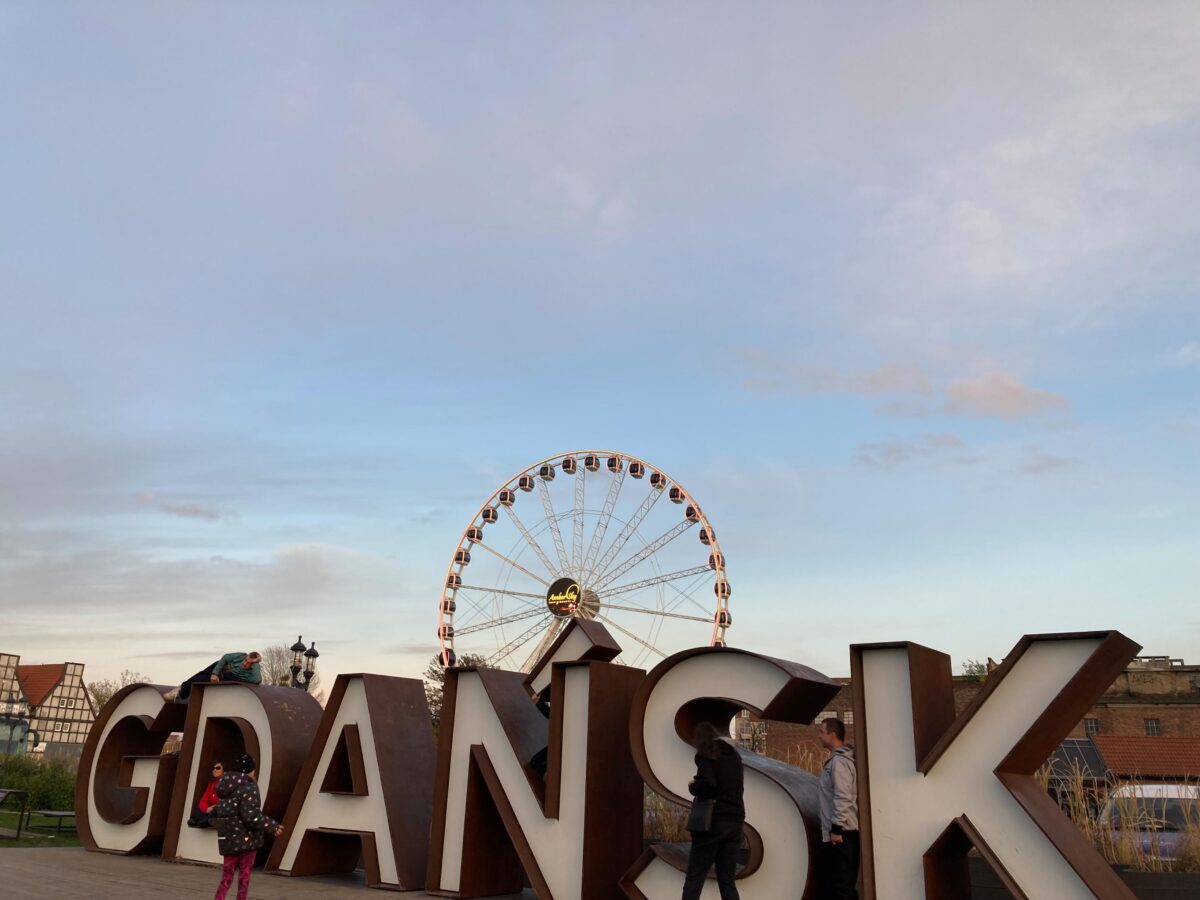
In my experience, you will get at least 5-6 full rotations of the wheel, with multiple stoppages, so that you get 15-20 minutes on the wheel. This is ample time to enjoy the views. Maybe you will even see a pair of foxes playing on a nearby rooftop as I did one time! Additionally, the carriages are heated or air-conditioned, so it is a nice respite depending on the weather outside. So, do not skip the AmberSky, it is one of the best things to do in Gdańsk.
Cost: A ticket costs 37 PLN. If you have a child less than 1.40 meters tall (around 4 ft 7), they only cost 27 PLN. Children 3 or under are free. There is also a student discount available on Mondays down to 27 PLN during the school year.
Finally, there is a VIP experience that you can also choose from! You will be treated to a 30-minute ride with armchairs, a TV, a full glass floor, and even a mini-fridge with Prosecco if you would like. This costs 350 PLN for the entire cabin, or 400 PLN if you want the Prosecco included.
Hours: The Ferris Wheel is open every day. From Monday to Friday, it is open from 10:30 AM to 10 PM. On Fridays and Saturdays, it is open from 10:30 AM until Midnight. Finally, on Sundays, it is open from 10 AM to 10 PM.
Transit Information: The AmberSky Ferris Wheel is found along the canals of the Old Town, so view the entry for the Old Town to learn how to use public transport to get to the Old Town, and thus the Ferris Wheel. There is, however, a large parking lot right in front of the wheel if you need to park.
Best Things to Do in Gdańsk: Day Trips
While Gdańsk certainly has a lot to do, its location is near some other amazing landmarks of Poland means you should take advantage of this and take a day trip somewhere. Below, you will find three-day trips that are possible, including one that is technically still in the Gdańsk city limits. While there are certainly more, these three are the most interesting, in my opinion.
18. Visit Sopot
Description: Sopot is a charming city found north of Gdańsk. It is the middle city of the three cities part of the Trójmiasto, wedged between Gdynia (a city that is not too exciting to visit) and Gdańsk. Sopot has been visited as a tourist destination since the 19th century, when it was established as a health spa. Today, millions of tourists still visit Sopot each year to admire the sparkling Baltic Sea, as well as the Sopot Beach. Many tourists also choose to walk up and down the Sopot Pier, the longest wooden pier in all of Europe.
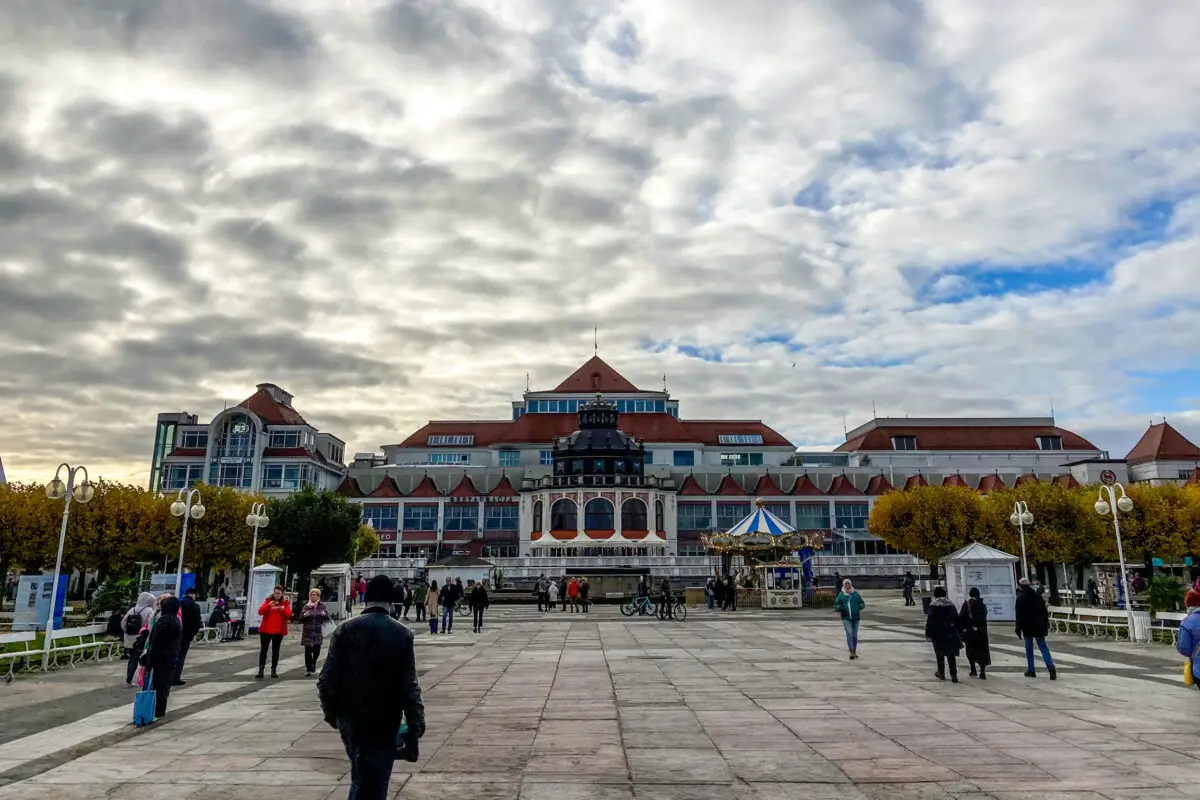
Beyond the beach and the pier, there is much else to do in Sopot. Walking up the main promenade on ul. Bohaterów Monte Cassino will take you past many shops and restaurants worth a visit. Some other sights on the promenade include Wojtek the Bear, a statue commemorating the Polish soldier bear who “fought” in WWII, and Krzywy Domek, a crooked building that now serves as a small shopping mall. Other attractions to consider are a bike ride along the beach, visiting a museum such as the Sopot Museum, or relaxing at a spa at Aqua Park Sopot.
For a complete guide to Sopot, view the recently published blog article about Sopot!
Cost: How much you spend in Sopot depends on your budget! A typical meal will cost between 40-70 PLN. Entry to some of the museums and the pier will probably cost you around 20-25 PLN per person. Otherwise, all costs will be what souvenirs and snacks you buy along the way.
Hours: Check each individual attraction in Sopot for hours. However, the pier in Sopot is often open 24 hours, as is the beach.
Transit Information: Getting to Sopot from Gdańsk is easy. You can take one of the SKM trains from any train station in Gdańsk to Sopot. From the Old Town it takes about 20 minutes by train and costs around 5 PLN. I would not recommend taking a bus, as it takes a long time compared to the trains and is not much cheaper. If you want to drive, there is parking throughout the city, but it is limited, so getting to the city early increases your chances of snagging a spot!
19. Explore Malbork Castle
Description: Malbork Castle is an impressive landmark within a short train ride of Gdańsk. Thus, when visiting Gdańsk, I highly recommend taking a trip down! Malbork Castle is one of the largest castles in the world. What makes it most impressive is that it is built entirely out of brick. The castle’s beautiful coppery color is what makes it stand out, as well as its impressive walls, gates, and grounds. The castle is the work of Teutonic Knights, who used Malbork to protect their lands for many years, before selling the castle to the Polish royal family, who then made it a royal residence.
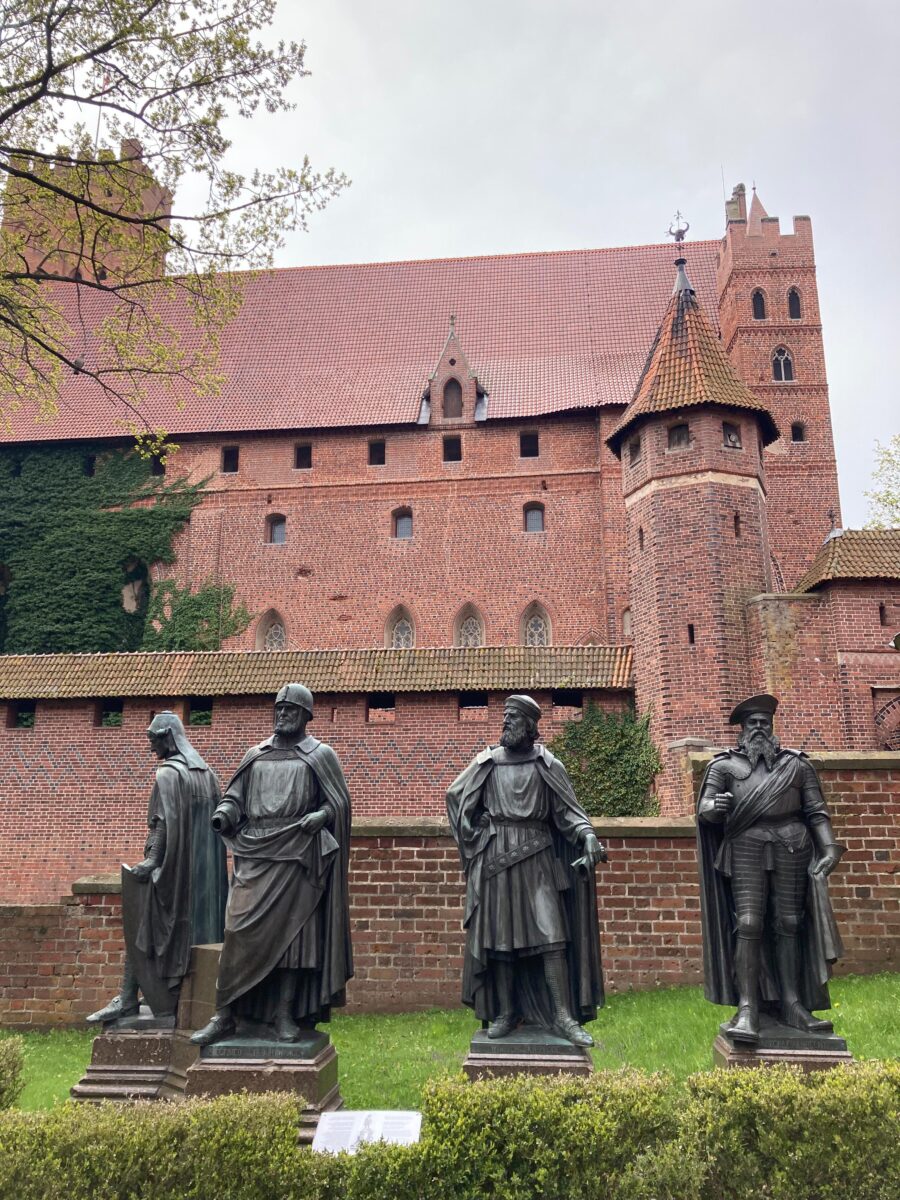
When visiting now, you start by walking across a drawbridge, through a gate, and into the central courtyard of the castle. From here, you walk from room to room of the castle, learning about the history of the Teutonic knights, the Polish royal family which lived here, and the many wars fought around the castle. You will also see what artifacts remain from the original castle, as well as large collections of artworks, weapons, and more. Then, you can walk some of the outdoor routes of the castle to get amazing views of the next-door river. All in all, Malbork is a must visit when in Poland, and Gdańsk is the perfect place to start you journey to Malbork from.
Cost: The cost of admission is on the pricier side, at 70 PLN/50 PLN reduced. But, considering the number of things you can see with this ticket, I feel it is more than worth it. Additionally, if you have a family of four with two adults and 2 children, consider buying the 2+2 family ticket for 220 PLN for a small savings. I recommend buying tickets online in advance, especially if visiting during a holiday, or on a summer weekend. Otherwise, you may be stuck in a very long line waiting for the tickets.
Hours: The hours for Malbork are inconsistent based on the season and each individual attraction at the castle. I would recommend visiting their website linked above for the schedule on the day you plan to visit.
Transit Information: From Gdańsk, it is about a 30-minute train ride to Malbork. You can use the regional train service, which takes slightly longer, or maybe find a cheap inter-city service. Otherwise, you will have to drive, with there being a very large parking lot on site at the castle.
20. View the mouth of the Vistula River
Description: As mentioned in prior entries, the Vistula River is one of the most important rivers in Poland, but especially to Gdańsk. Originally, the river flew through Gdańsk into the Baltic, but today, it has been engineered to enter the Baltic 21 km (13 miles) away from the Gdańsk Old Town. This has helped reduce flooding in the Gdańsk area significantly. Today, visiting the mouth of the river is still possible as a day trip, despite the distance from the city. You can visit the mouth at the Mewia Łacha Reserve, which protects the area on the left bank of the Vistula as it enters the sea.
The reserve is home to lots to do. You can walk along the sandy beaches, or along the trails through the forest. There is also the opportunity to see lots of nature, including a population of Baltic seals, who use the beach by the river to relax, and eventually breed. There is also one of the largest populations of gulls here, and lots of other birds to find. During the summer, the reserve offers on-site experts to learn about the birds. Otherwise, just walk along the beach, or watch the sunset from the viewing tower. This place is beautiful, peaceful, and an important place in Poland, so visiting it while in Gdańsk is worthwhile if you have the time!
Cost: Visiting the nature reserve at the mouth of the Vistula River is entirely free! Take out all your trash to keep the beach a nice place for future visitors.
Hours: You can visit the nature reserve at the mouth of the Vistula River any time you want throughout the year. Just keep track of the bus schedule so you do not get stranded! And even so, there are two different night buses at midnight and 3 AM that will get you back to the city if you really want a late night on the beach.
Transit Information: Even though the mouth of the Vistula is quite a distance from the center of Gdańsk, it is still technically in Gdańsk, and thus there are city buses that reach it! You can take Bus 112 from the central train station to the stop Przystan 02 in about 45 minutes, and then it is about a 3 kilometer (2 mile) walk to the beach from there. If you want to go to the east side of the mouth, there is a ferry that runs every day to cross the river. Once crossing, it would be a similar walk to get to the beach. Even when driving, you must park in the Swibno neighborhood and walk from there.
Best Things to do in Gdańsk: Conclusions
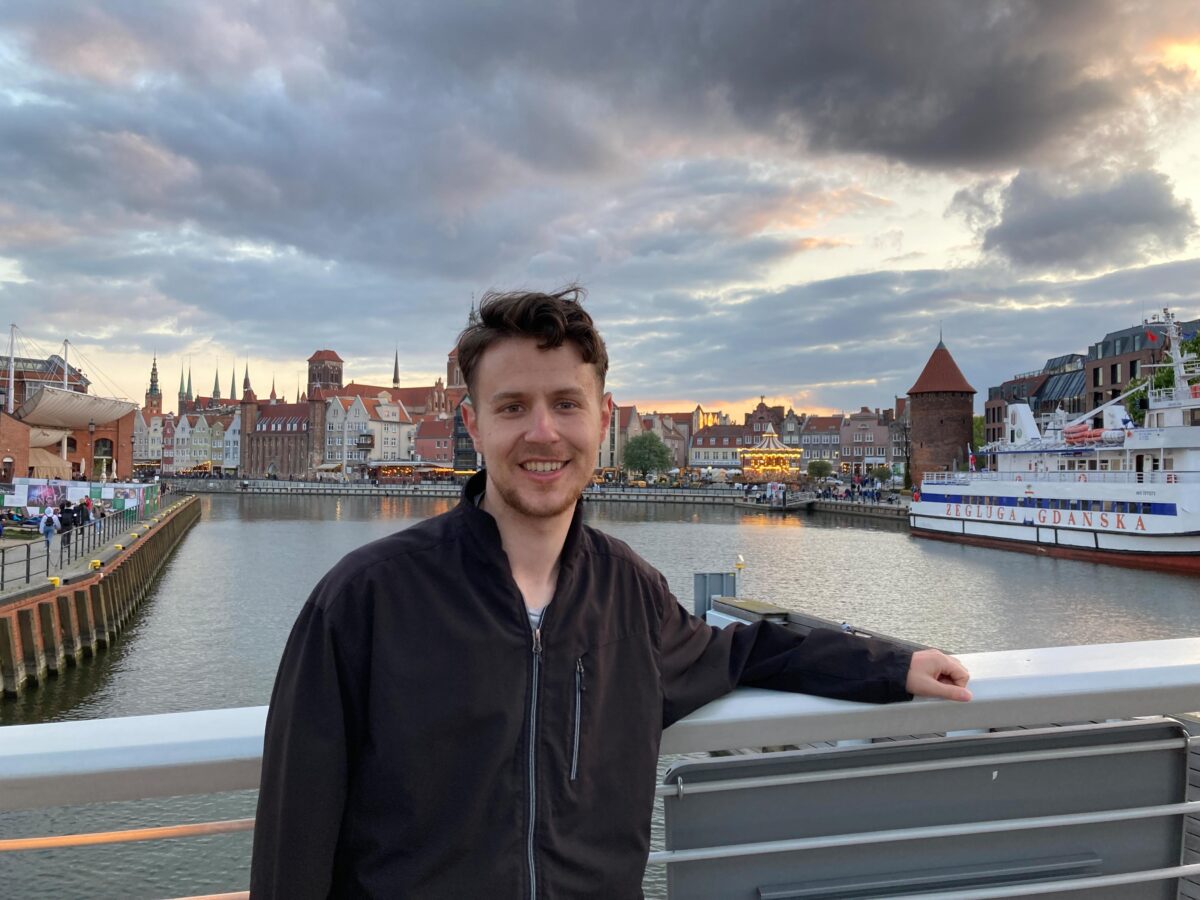
Gdańsk truly is a lovely city. There is a reason I have made 4 separate trips to visit it, and I still have not seen all the city has to offer. Not only is the city beautiful, and a completely different feel from other Polish cities, the people there are extremely kind! There is so much to explore, and I would recommend visiting Gdańsk as soon as you can! Finally, below you will find a short description of some final important things to know about traveling to Gdańsk! Look out for some future articles about restaurants and hotels!
Getting to Gdańsk: Gdańsk is served by its own international airport with flights from all over Europe. The airport is served by Gdańsk’s public transportation, so you do not need to use a taxi to get to and from the airport. Additionally, the recently renovated Gdańsk Główny train station, an icon itself, will get you all over Poland via train. You can also choose to rent a car and drive to Gdańsk, it is a manageable guide. For some specific information on how to get to Gdańsk from Warsaw, read this article.
Getting Around Gdańsk: Gdańsk has decent public transportation, that is rapidly improving. There is a network of trams and buses that will get you almost anywhere. But, as many of the main attractions are in the center, walking will be your main mode of transport. But, if you need to use public transportation, a warning! Tickets are hard to buy! As of writing this, it looks like Gdańsk is going to soon introduce a way to buy tickets on the bus, but as of writing this, you can only buy tickets at ticket machines, or on apps!
You can find bus ticket machines at most major tram and bus stops, including at the central train station. On these you can buy single-use tickets, or longer-term tickets if you plan to stay in Gdańsk a while and use the transport a lot. However, some important places you might want to visit, like Westerplatte, do not have ticket machines. Instead, you can buy tickets through some mobile apps. My favorite is Jakdojade, but you can also use GoPay, moBilet, MPay, Skycash, or Zbiletem.
Be warned that often the apps will ask for authorization from your credit card, so make sure the app will be able to text your number a security code so you can buy! And contact your bank in advance to inquire about whether this might happen or not.
Another great public transportation choice is MeVo. This is a bike sharing service available as an app with English-language options. On MeVo, you register, pay a small 10 PLN fee, and then are allowed to reserve bikes for up to 2 hours per day entirely free! There are stations throughout Gdańsk, so you might find this is the best choice for getting to a place you want to visit, or just to take a leisurely ride around beautiful Gdańsk! Do note that if you do not leave the bikes at the proper station, you will get charged a 10 PLN fee.
Safety in Gdańsk: Poland is a very safe country! In Gdańsk, you should also not have to worry about your safety. You will find people trying to coax you into your restaurant with flyers or trying to get you to take a picture with an owl or hawk, but these are not scammers, they are rather entrepreneurs. I would just be careful at night in the Old Town sometimes, as this is where any rowdy drunk people might hang out (no judgement if you want to join!).
Hotels and Restaurants: Look out for future, more detailed, articles on these topics! Gdańsk has lots of great hotels and Airbnb’s to choose from. If you are conscious about which Airbnb you want to rent, I will say that some of the newer apartment buildings tend to be bought up by Airbnb investors and may contribute to raising local rent prices. However, there are lots of gems too. The one I recently stayed at was right in the city center with views of the Town Hall! Of course, if you are concerned, there are lots of hotels in the center, or some cheaper ones on the outskirts.
As far as restaurants go, most of the higher-rated ones are in the Old Town or along the canals. I would always check reviews before choosing a place to eat. There are lots of good restaurants in these locations, but also many touristy chains. In fact, if you notice there is more than one location in the Old Town, I would be wary about choosing that restaurant. Do note that restaurants in Gdańsk get crowded quickly, so eat early, late, or get a reservation if you can!
How Long to Stay: Gdańsk, despite not being the largest city in the world, does have a lot to do. Even beyond the 20 things on this list, you can find many other museums to peruse, streets to explore, and natural wonders to appreciate. Gdańsk is also found in a part of the country where you can access many other beautiful sites, such as those mentioned, or even further to the north Baltic coast, or east to the lake region of Masuria.
If you want to see Gdańsk (and Sopot), you need at least 2 nights to do it properly. But, if you want to do a full exploration, with some day trips beyond, I recommend 4 days to an entire week, if you have the time.
When Should I Visit: Gdańsk is an extremely popular city for Polish travelers. So, if you want fewer people, the best months to visit are March and April, or October and November. The weather will be a bit colder, but Gdańsk is beautiful year-round. If you visit in October and November, you also get the benefit of seeing the beautiful Polish autumn colors. I would, however, recommend looking up some of the key important holidays. The beginning of May is especially a busy time for Polish travelers due to the long holiday weekend to start the month, so book in advance if you want to go then!
The summer is a great time to visit too, even if popular. The weather is warm enough to fully enjoy the beautiful beaches of the area or have a nice drink along the canals. However, I feel that going to Gdańsk in the winter is extremely underrated. Not only are things cheaper, but Poland in the winter is also very beautiful, especially with snow! Additionally, you can appreciate the amazing Christmas Market, a Polish Christmas tradition worth experiencing, that happens in December. All in all, every season is a good season for Gdańsk!

